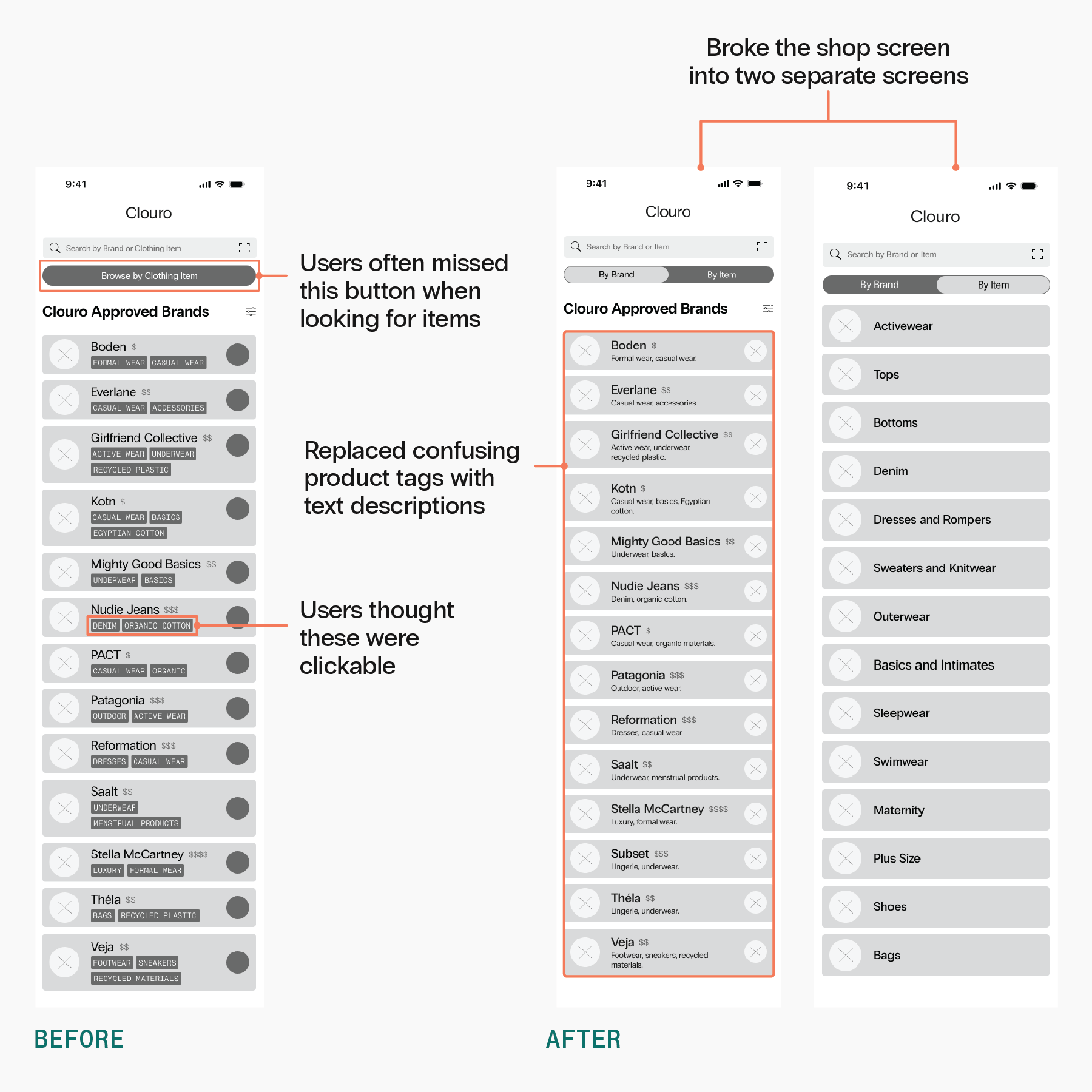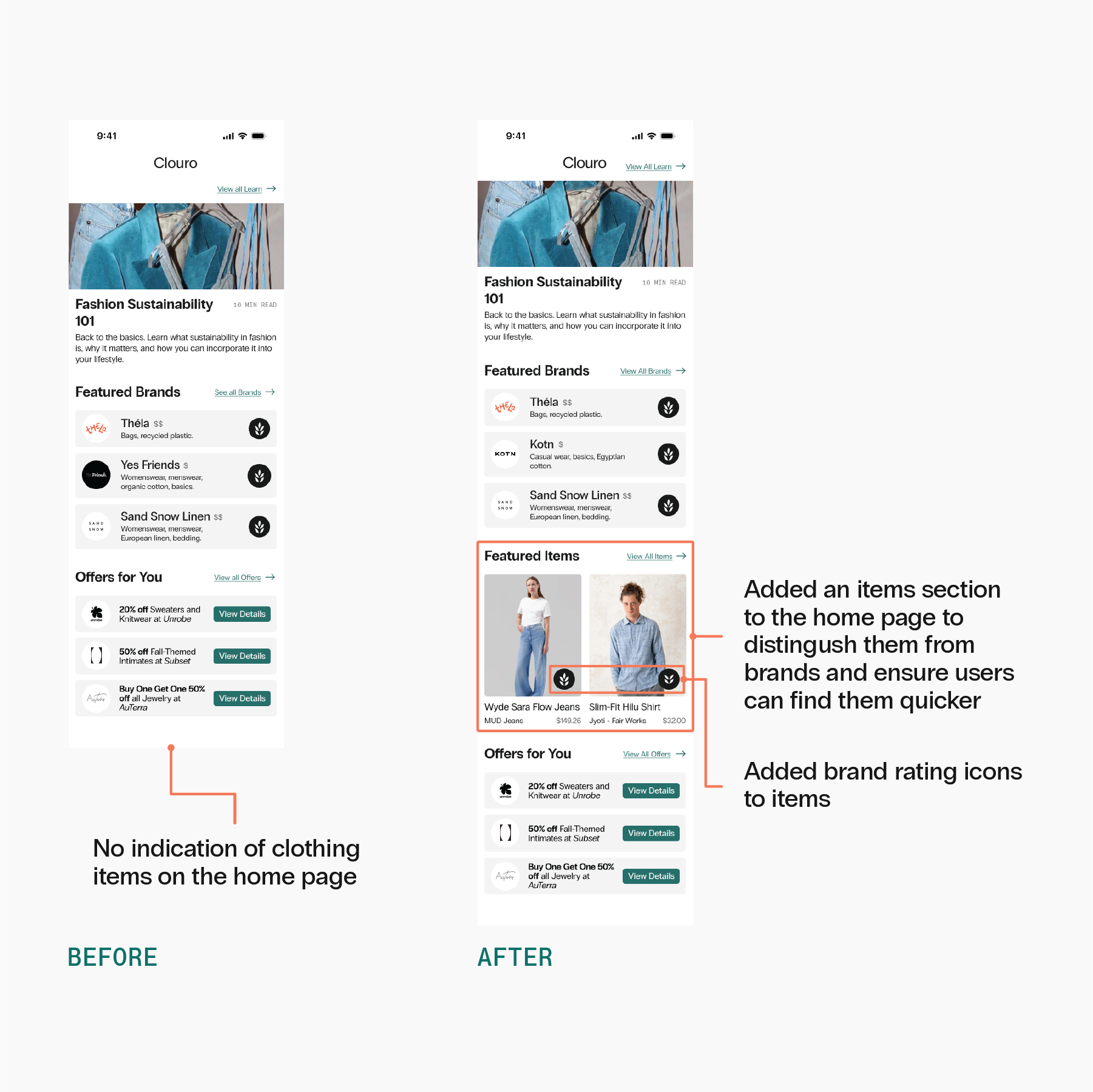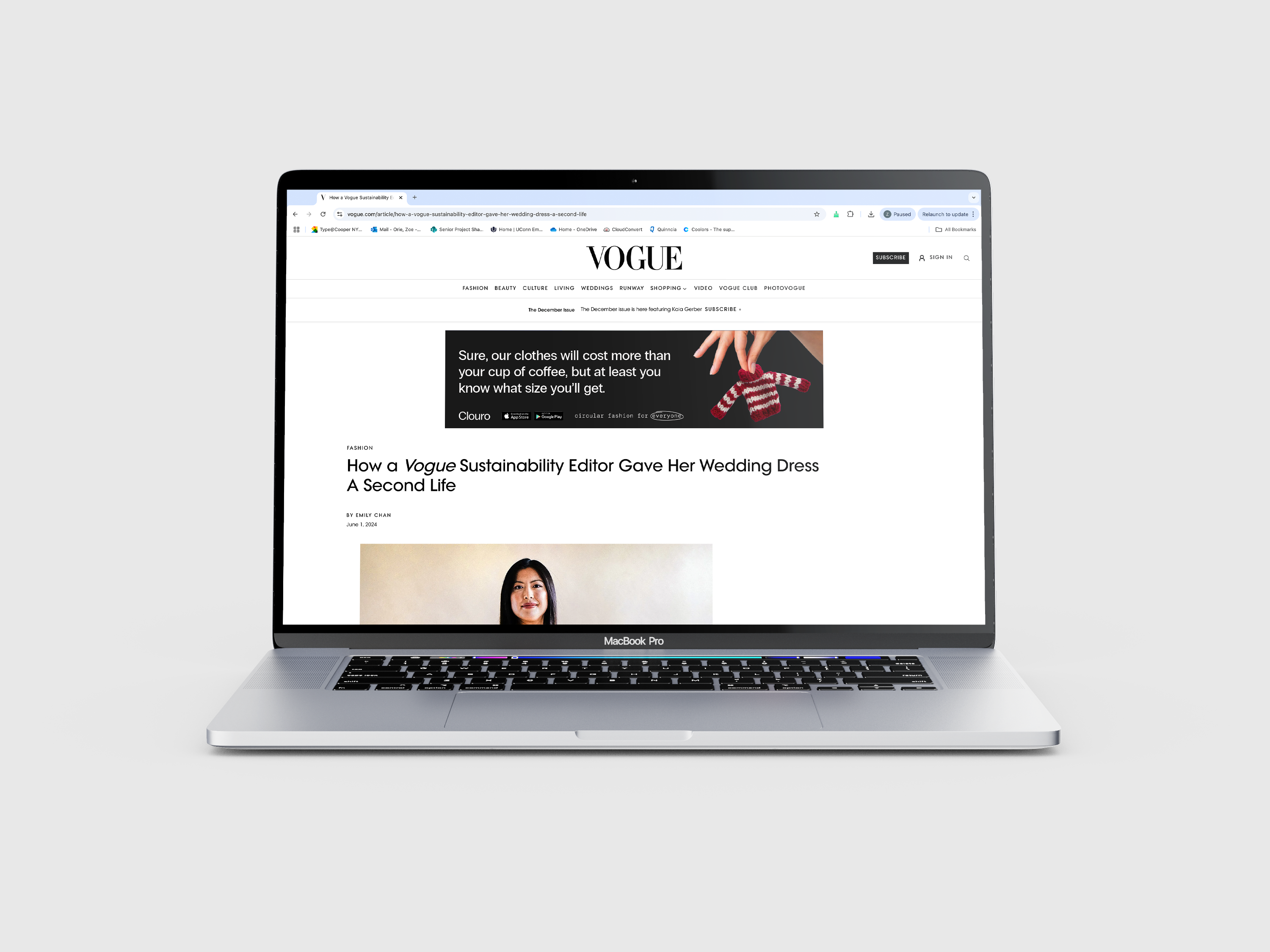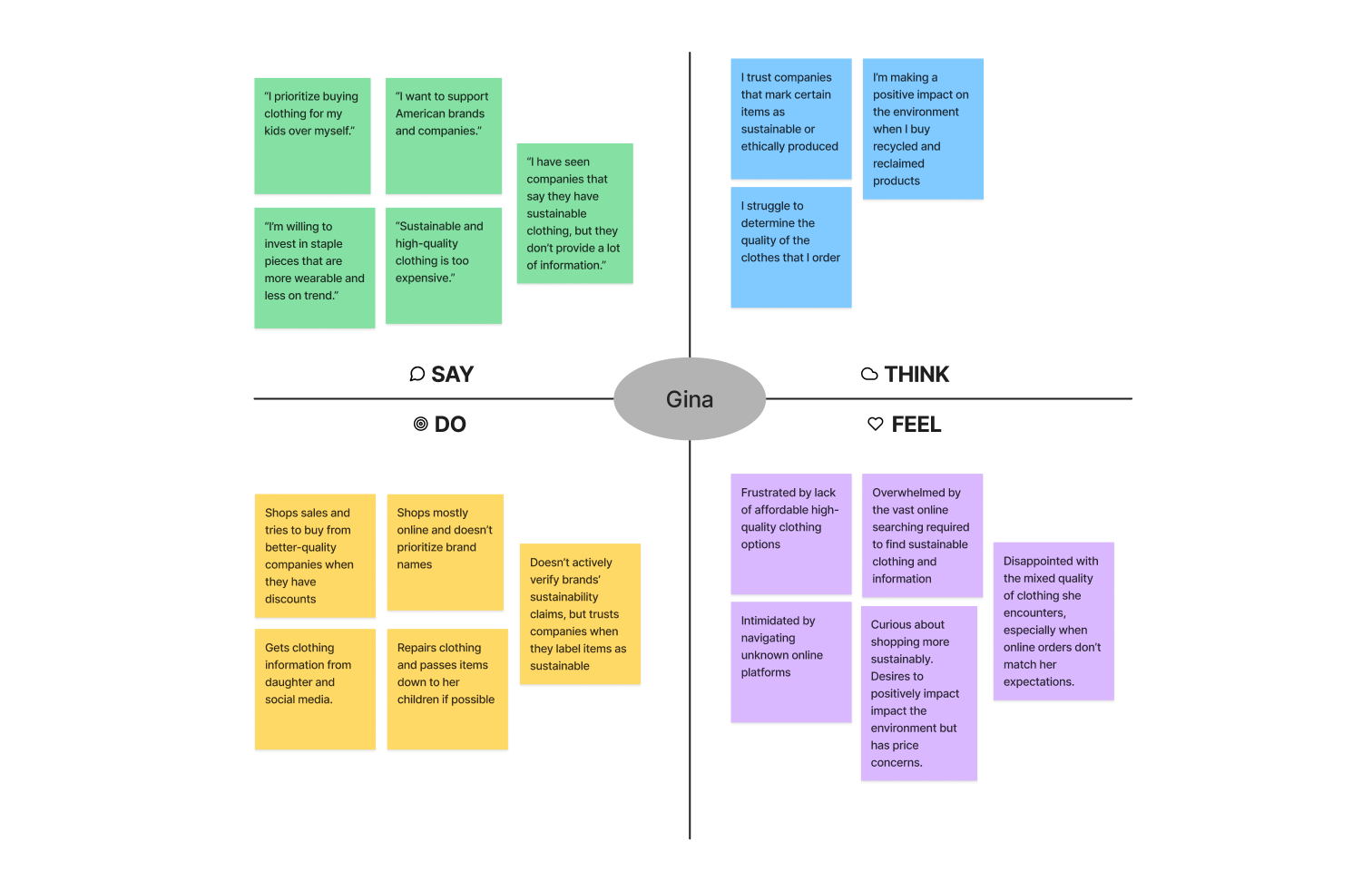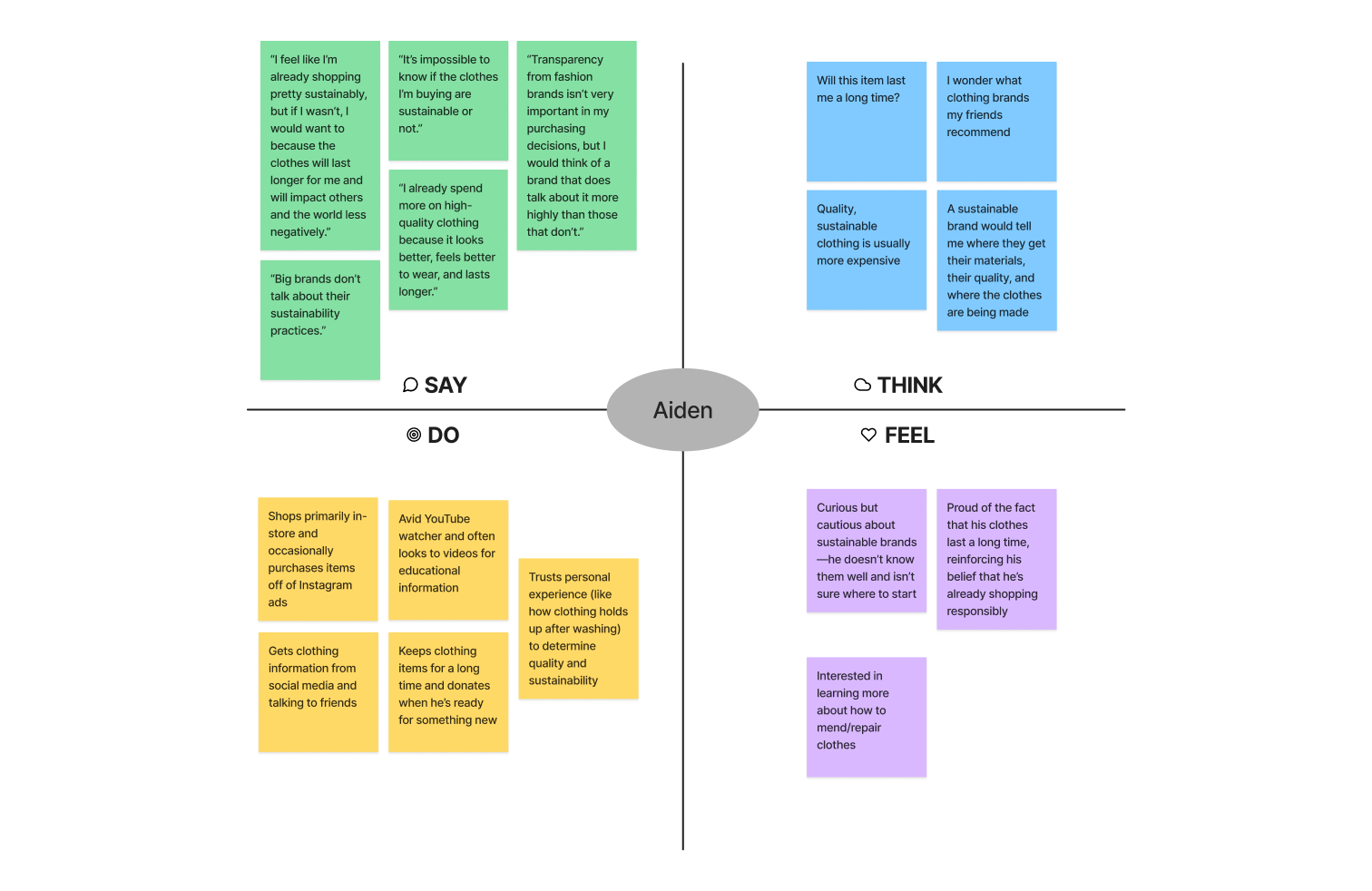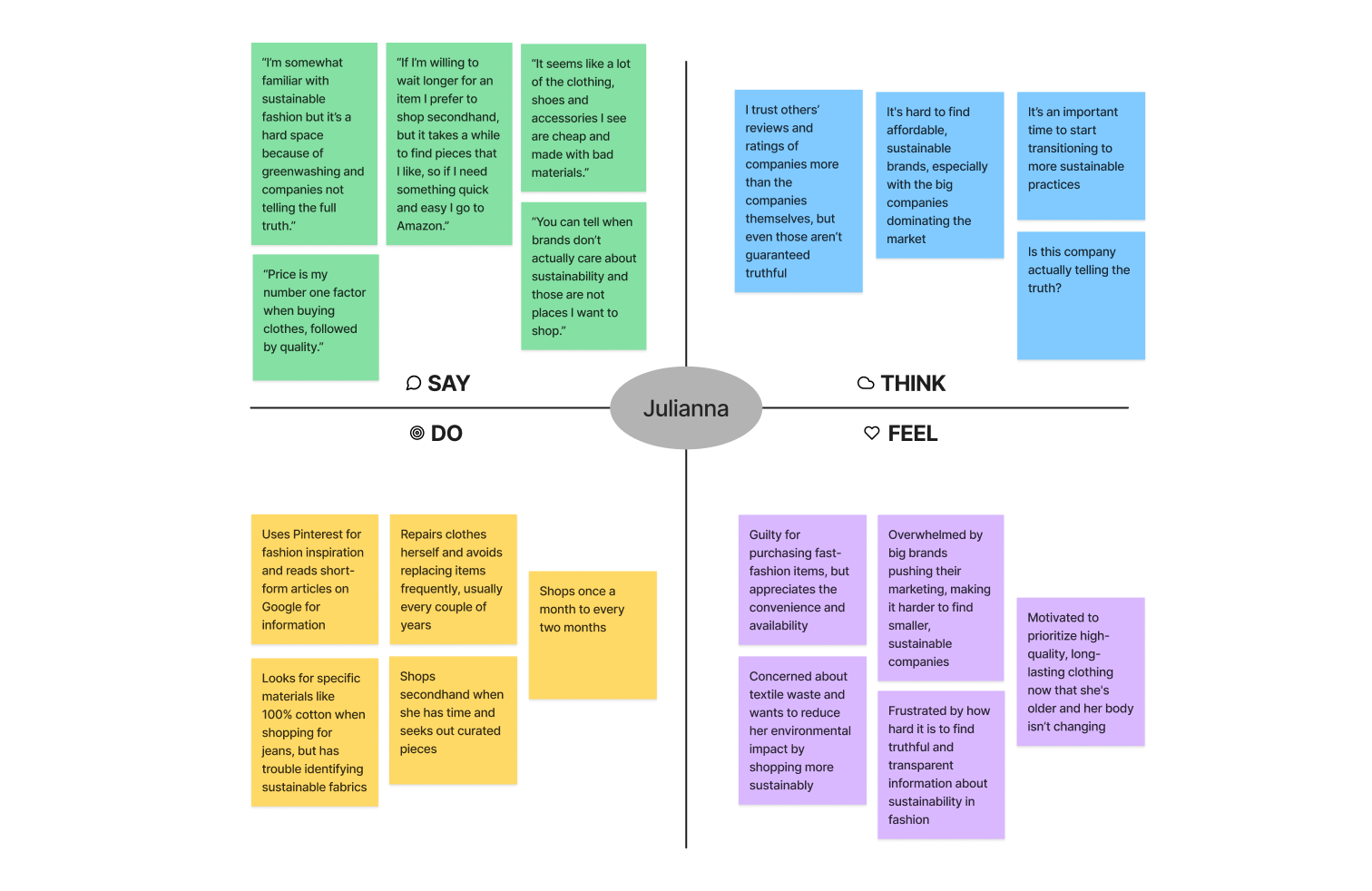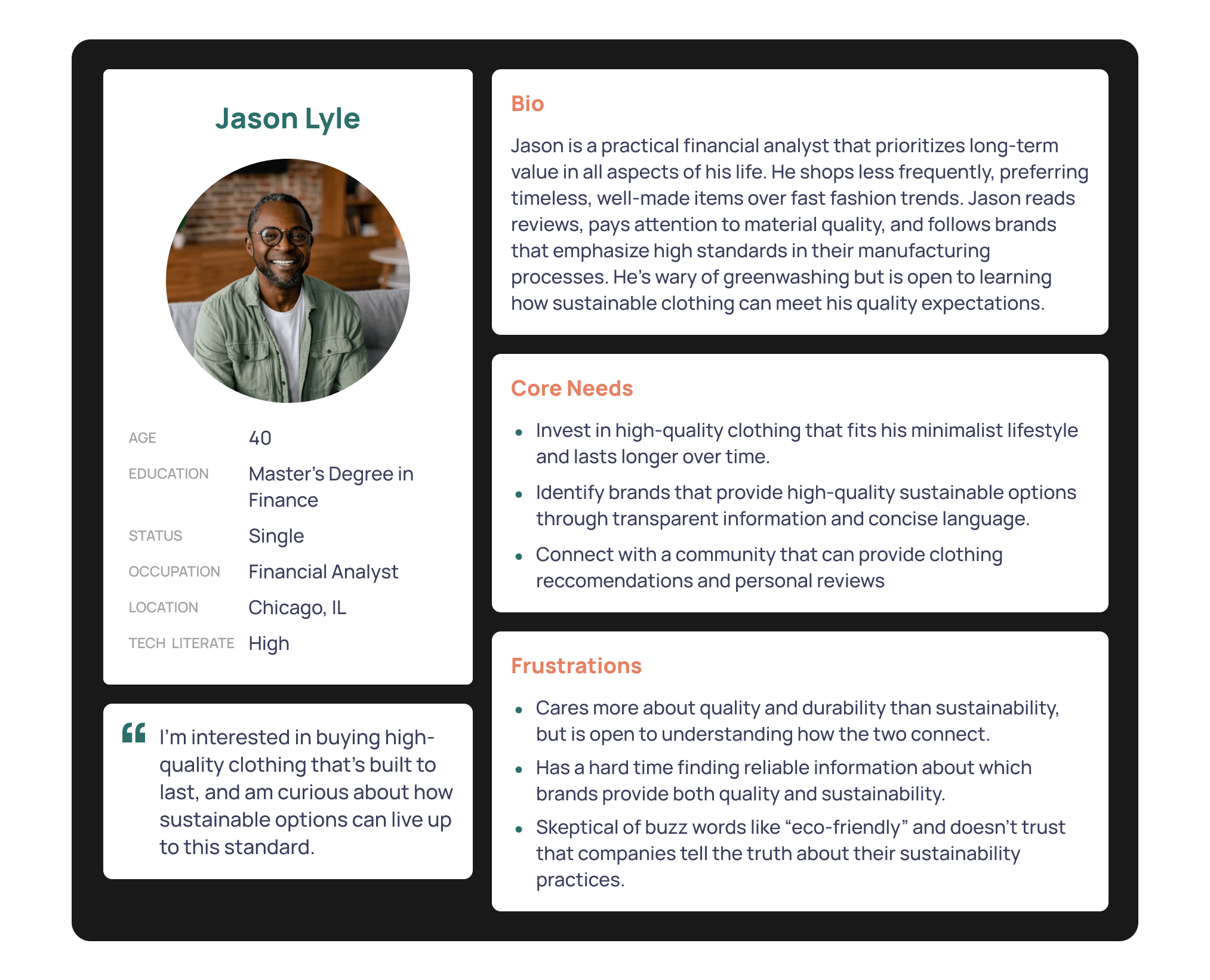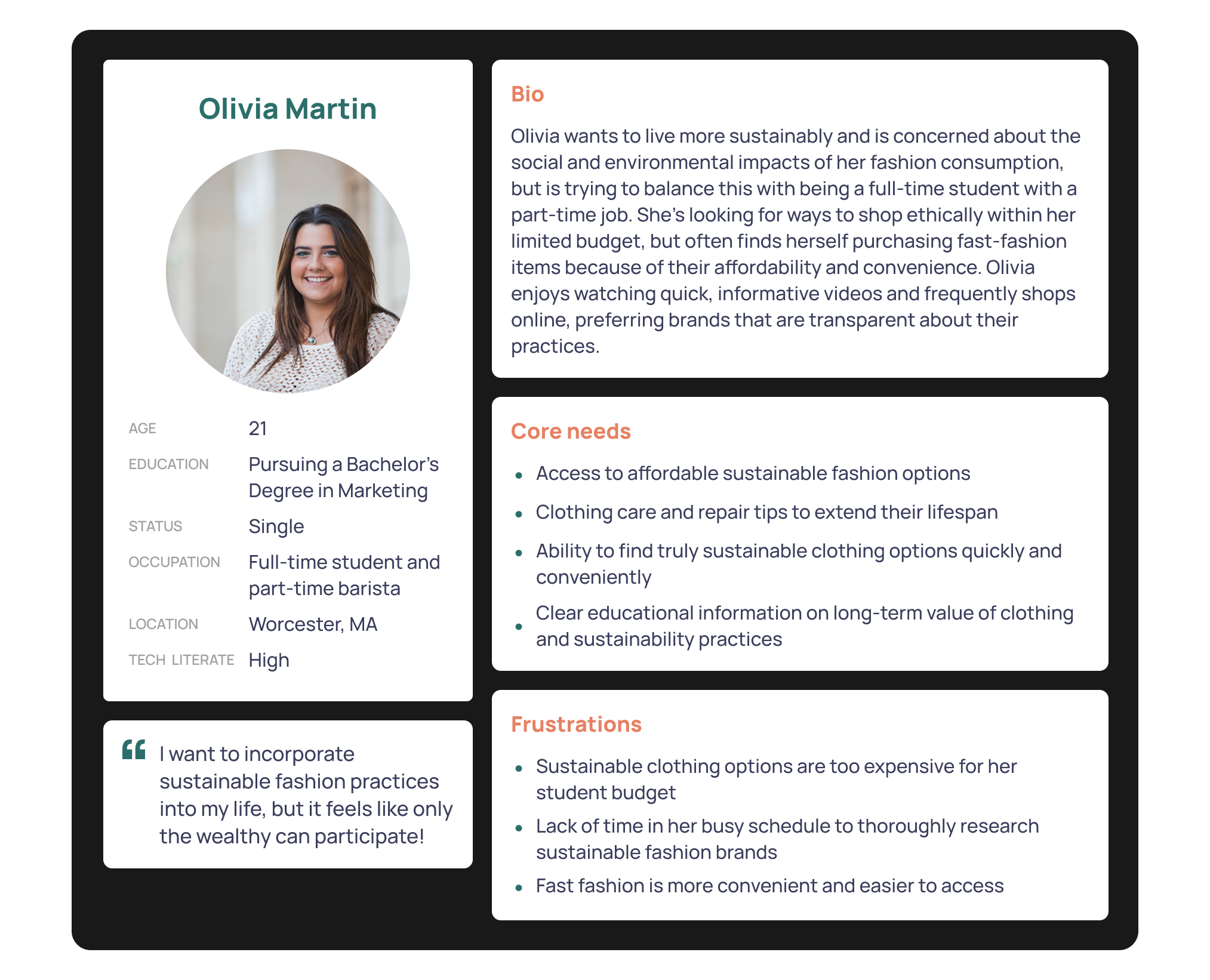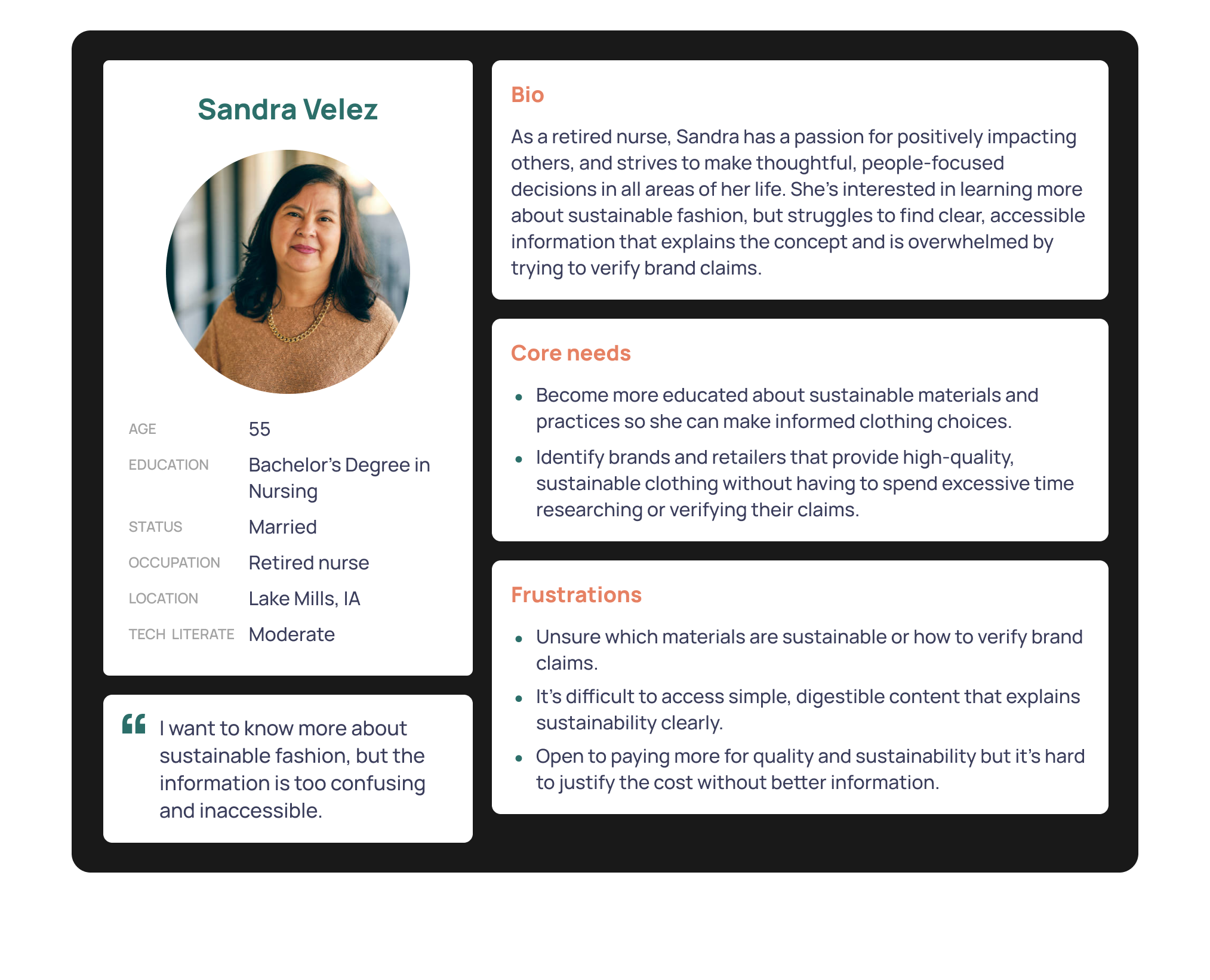Clouro
UI/UX Branding Print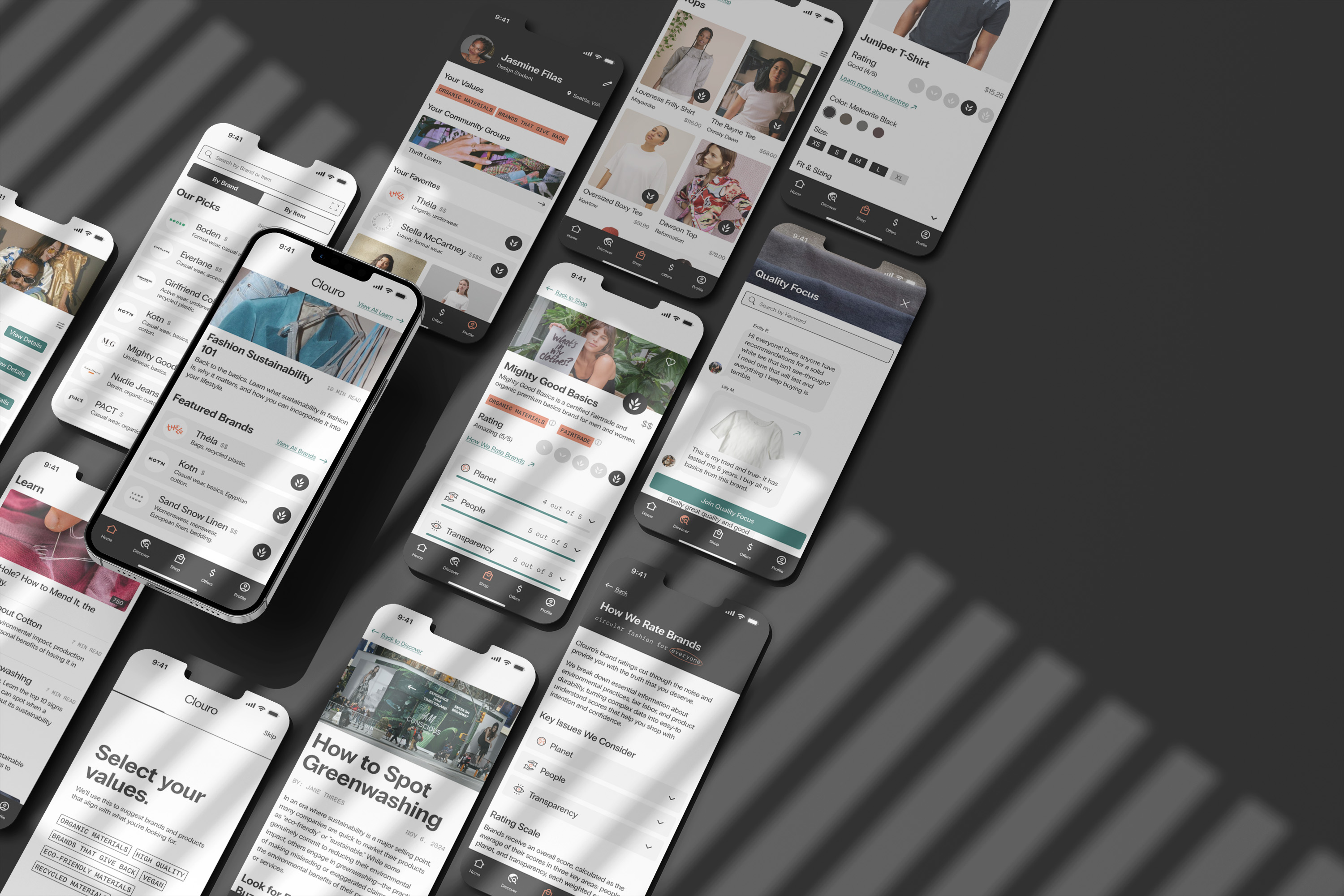
Circular Fashion for Everyone
Clouro believes everyone should have access to the information they need to make sustainable fashion decisions. In a world saturated by greenwashing tactics designed to hide harmful policies and strip consumers of their purchasing agency, Clouro aims to cut through the noise and provide consumers with the truth they deserve. Dedicated to transparency and reducing the environmental and social impact of fast fashion, the brand seeks to empower individuals to change their clothing consumption habits and embrace more sustainable practices: to buy better and less.
Role
Lead Designer
Deliverables
- UI/UX
- Identity
- Advertising
- User Research Study
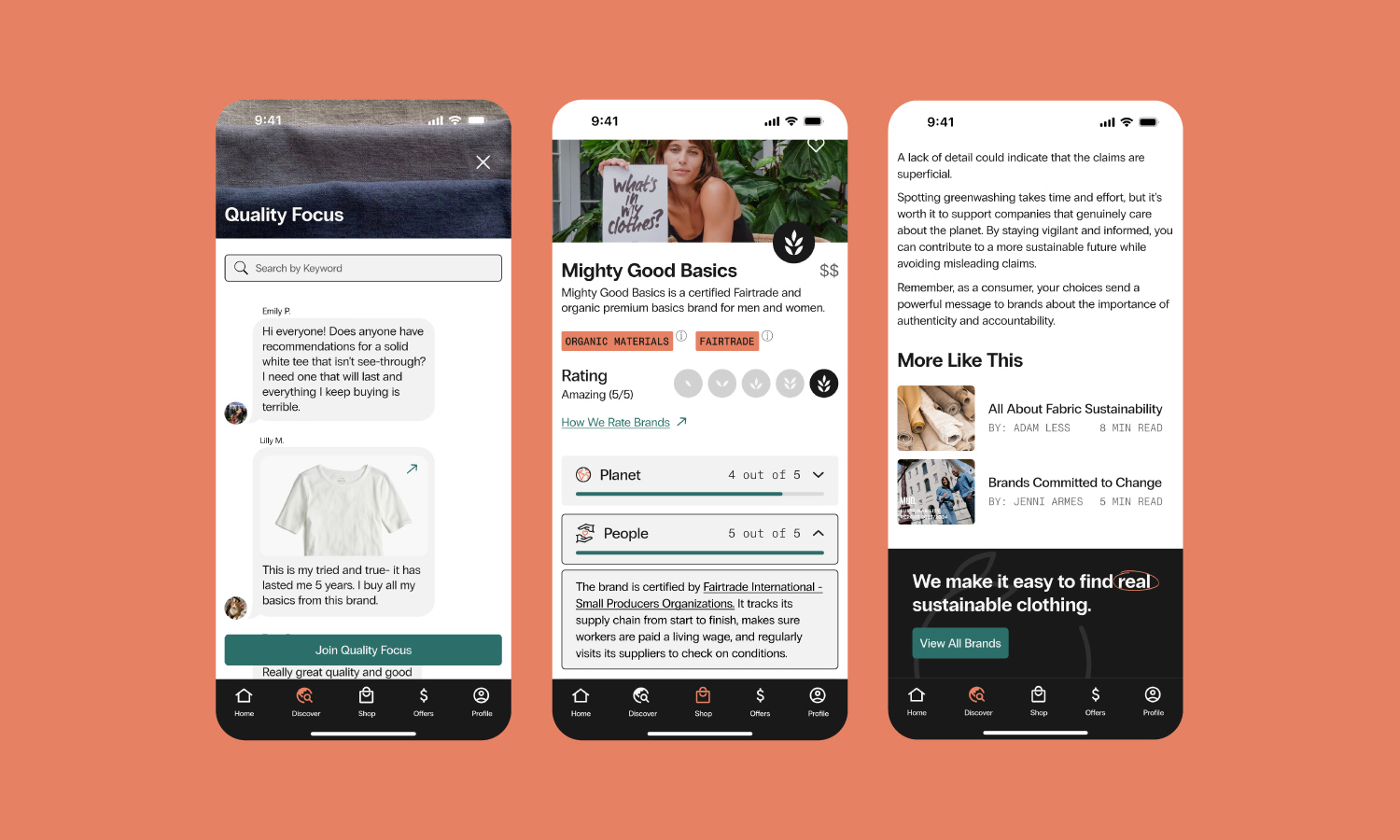
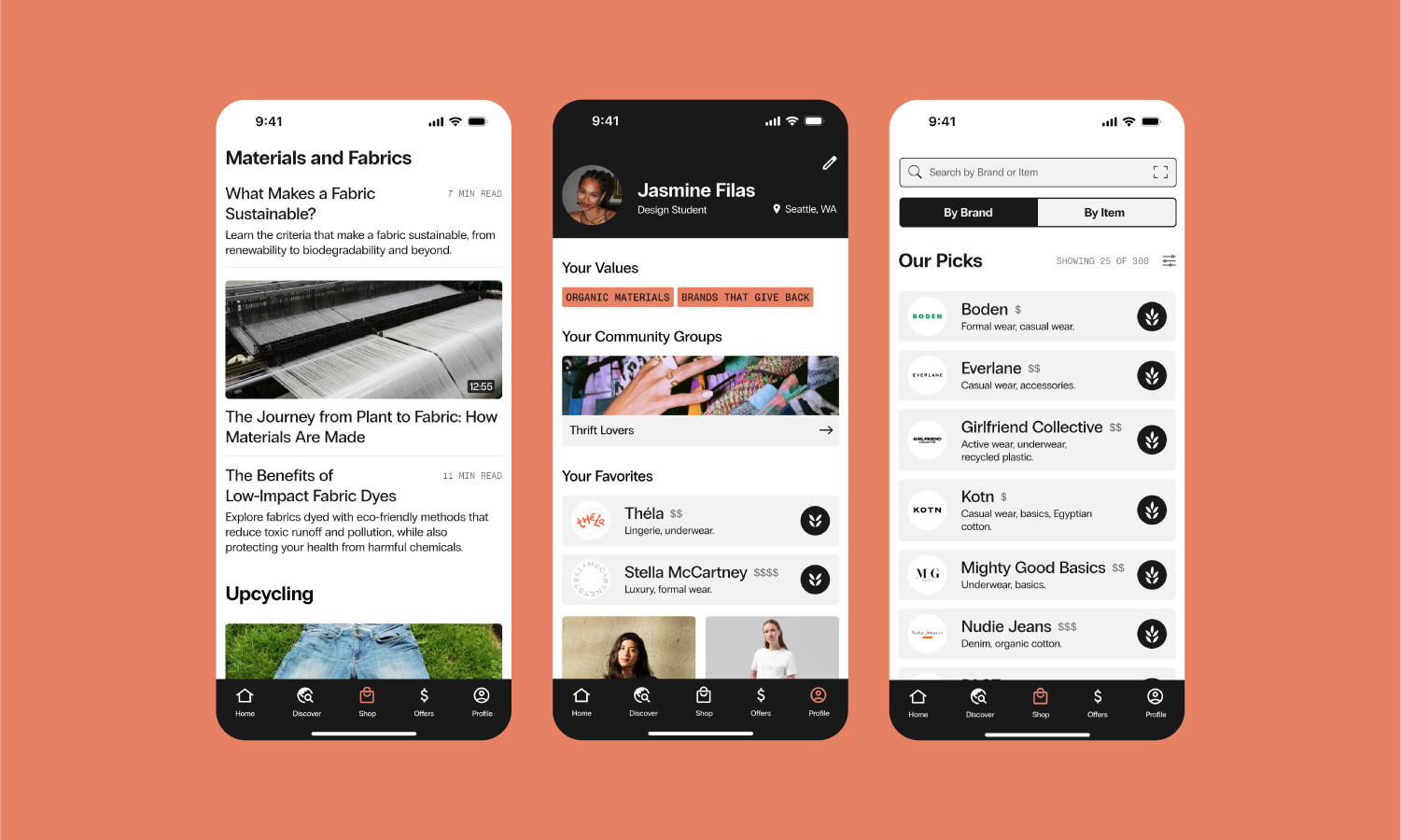
Real Support
Clouro's high-fidelity app prototype is a comprehensive tool for purchasing and learning about sustainable fashion. By providing transparent, clear information on clothing brands, including their materials, origins, production processes, and the real-world implications of each purchase, Clouro equips consumers with the tools they need to make sustainable fashion decisions.
The app also aims to educate consumers on sustainability beyond the purchase through clothing care and repair tips, thrift store recommendations, and more. Key features include clear sustainability ratings and information, clothing lifespan metrics, personalized educational content, and community forums.
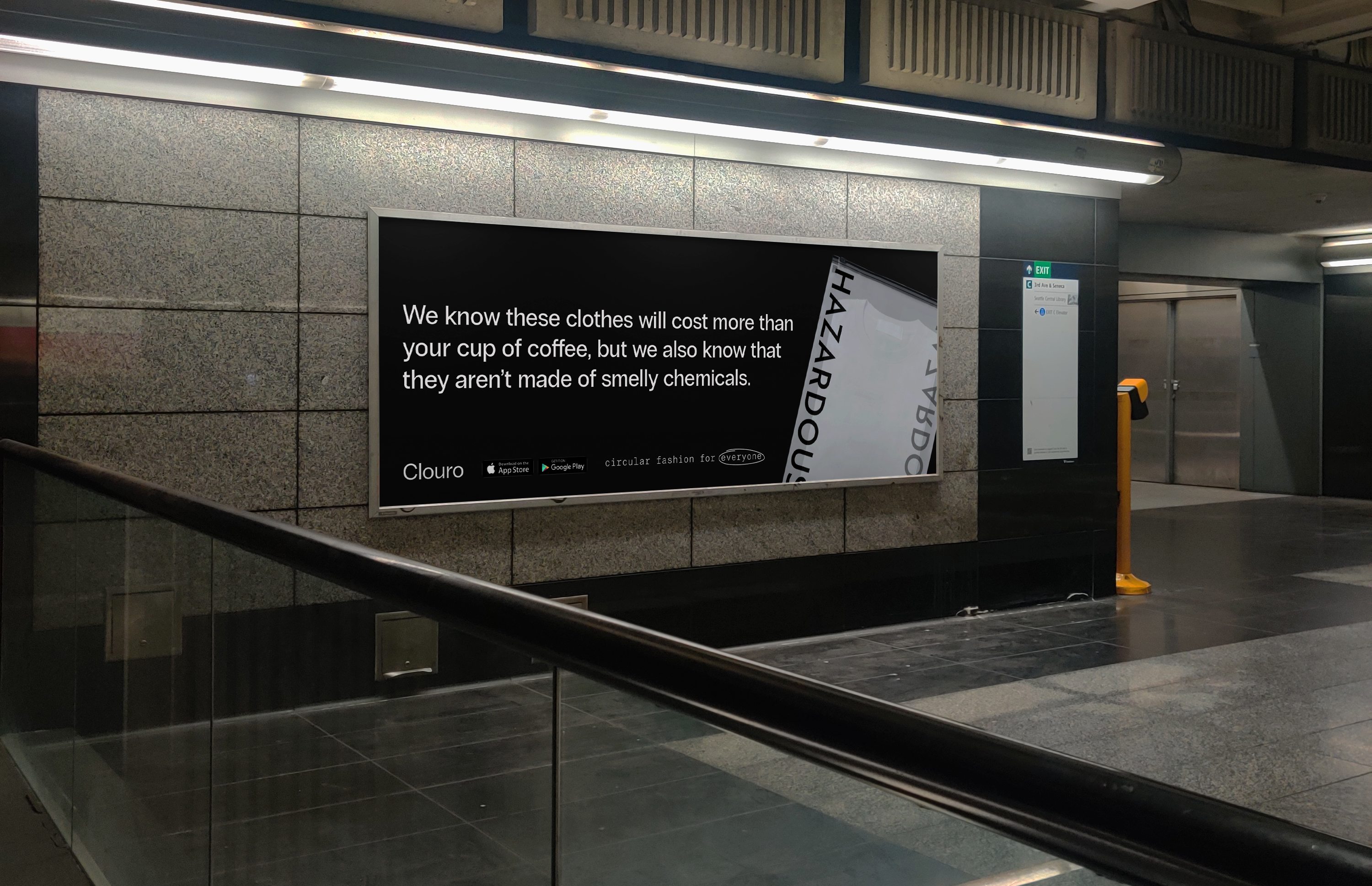
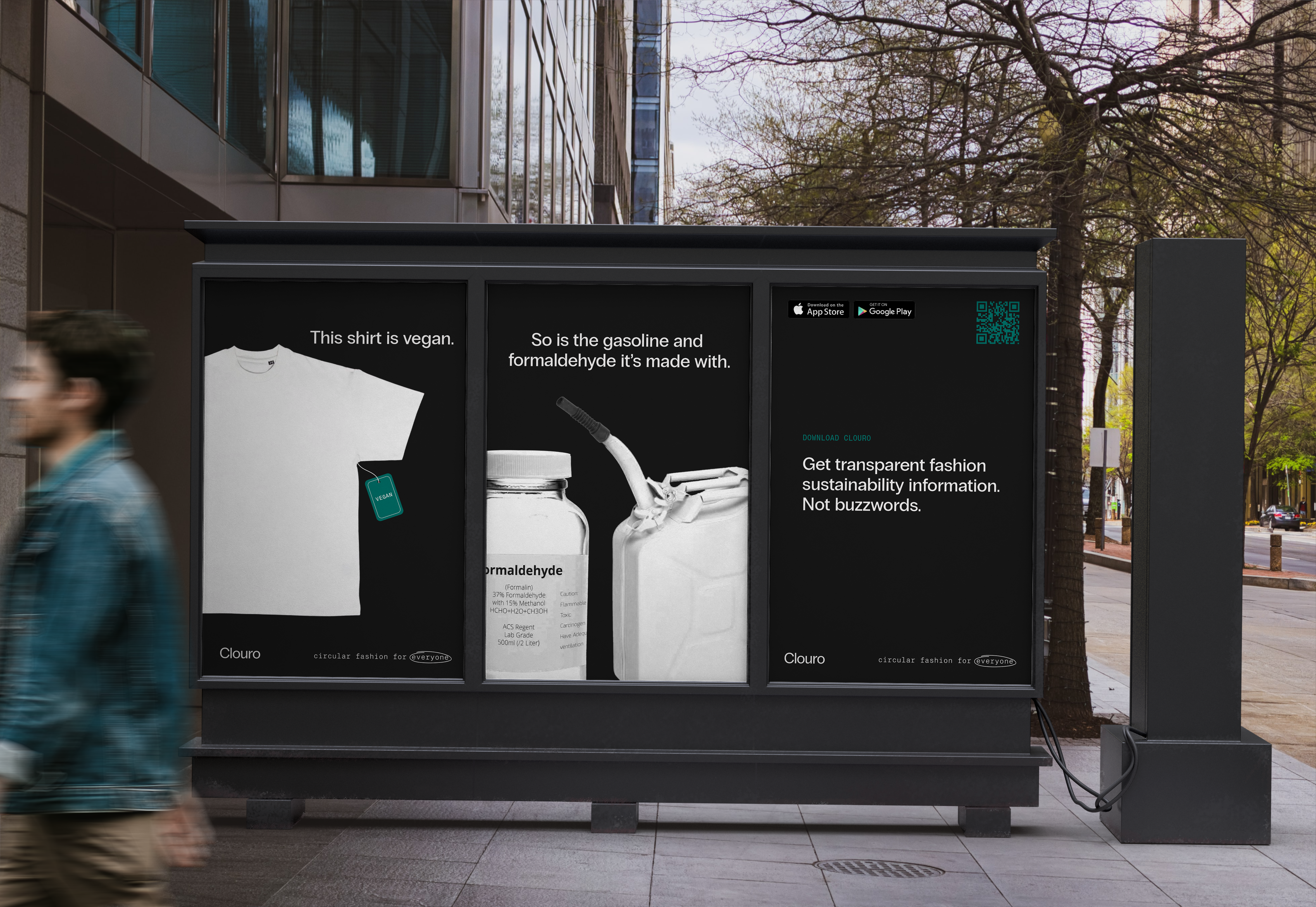
Calls for Change
Clouro's marketing campaign highlights the harmful practices of the fast fashion industry. Through humor and play on viral fast fashion mishaps and absurdities, I aim to pinpoint what matters to the target audience and call out the need for Clouro without condemning the consumer.
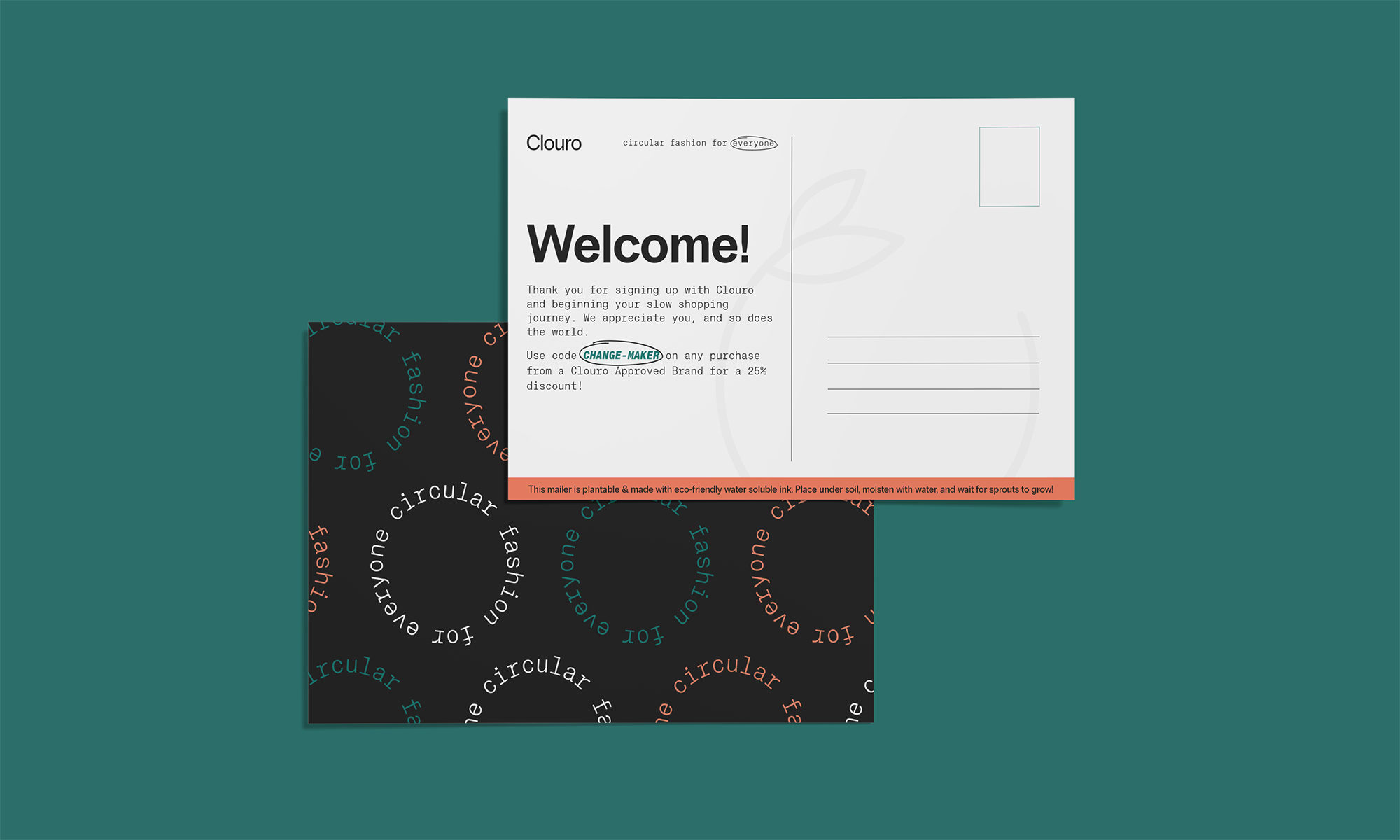
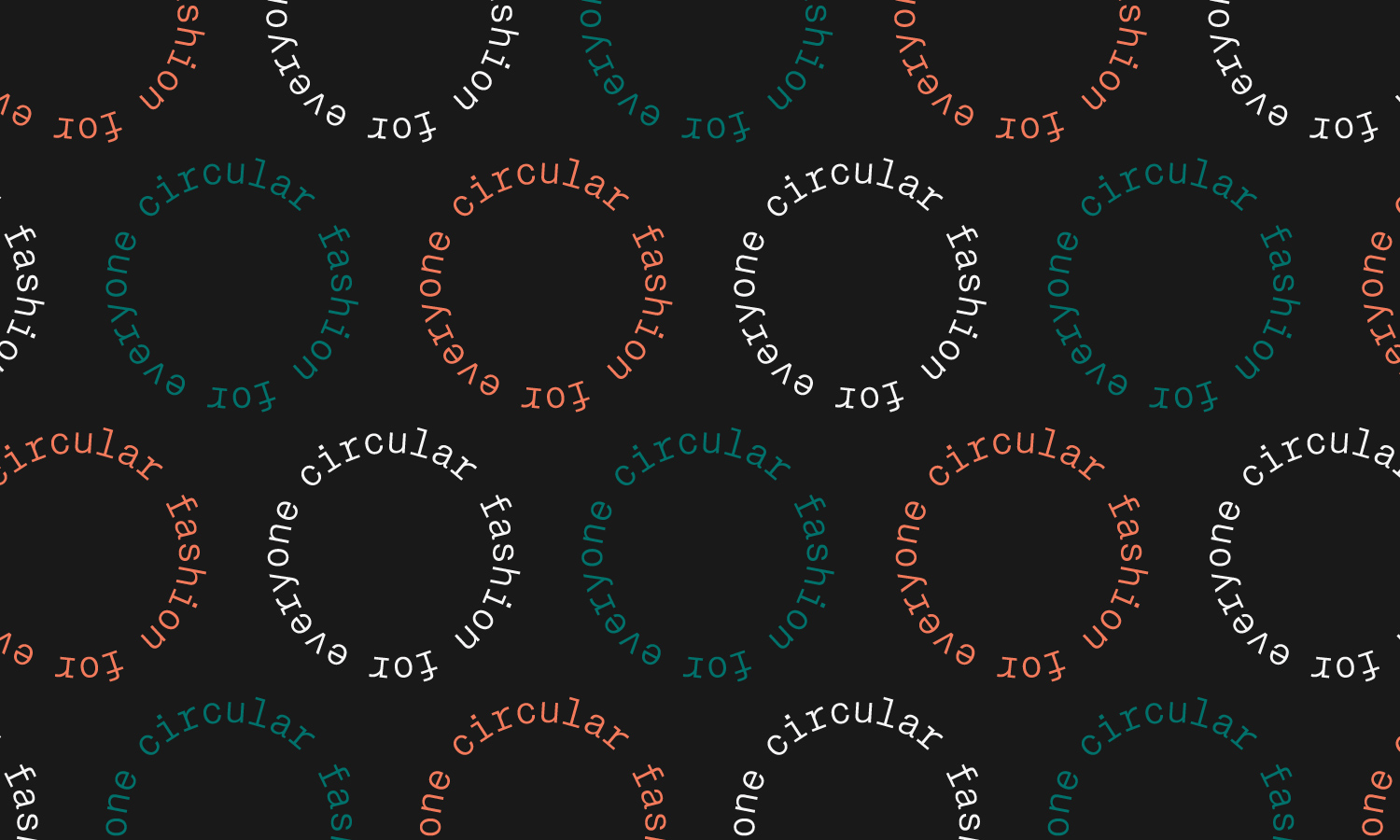
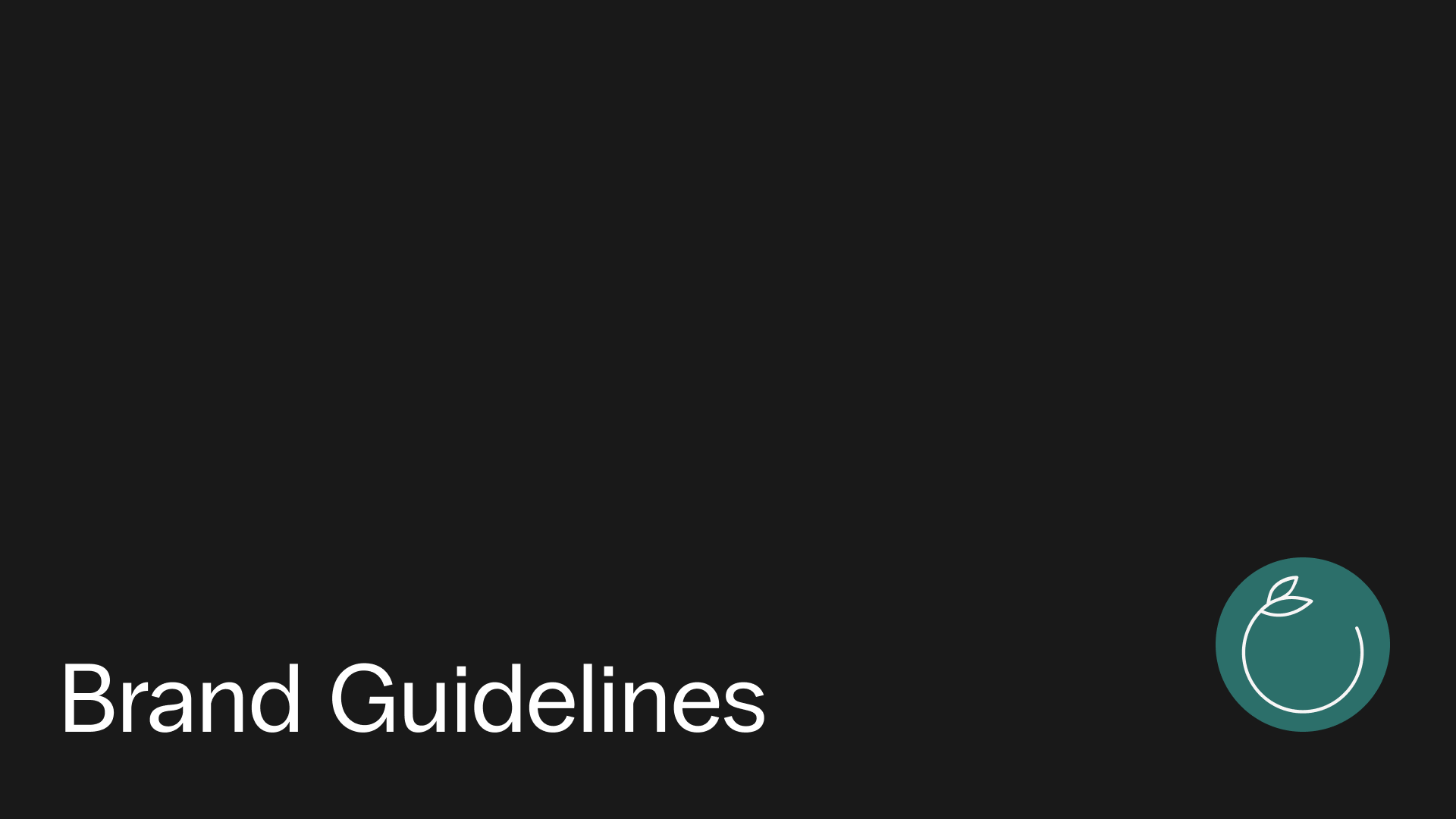

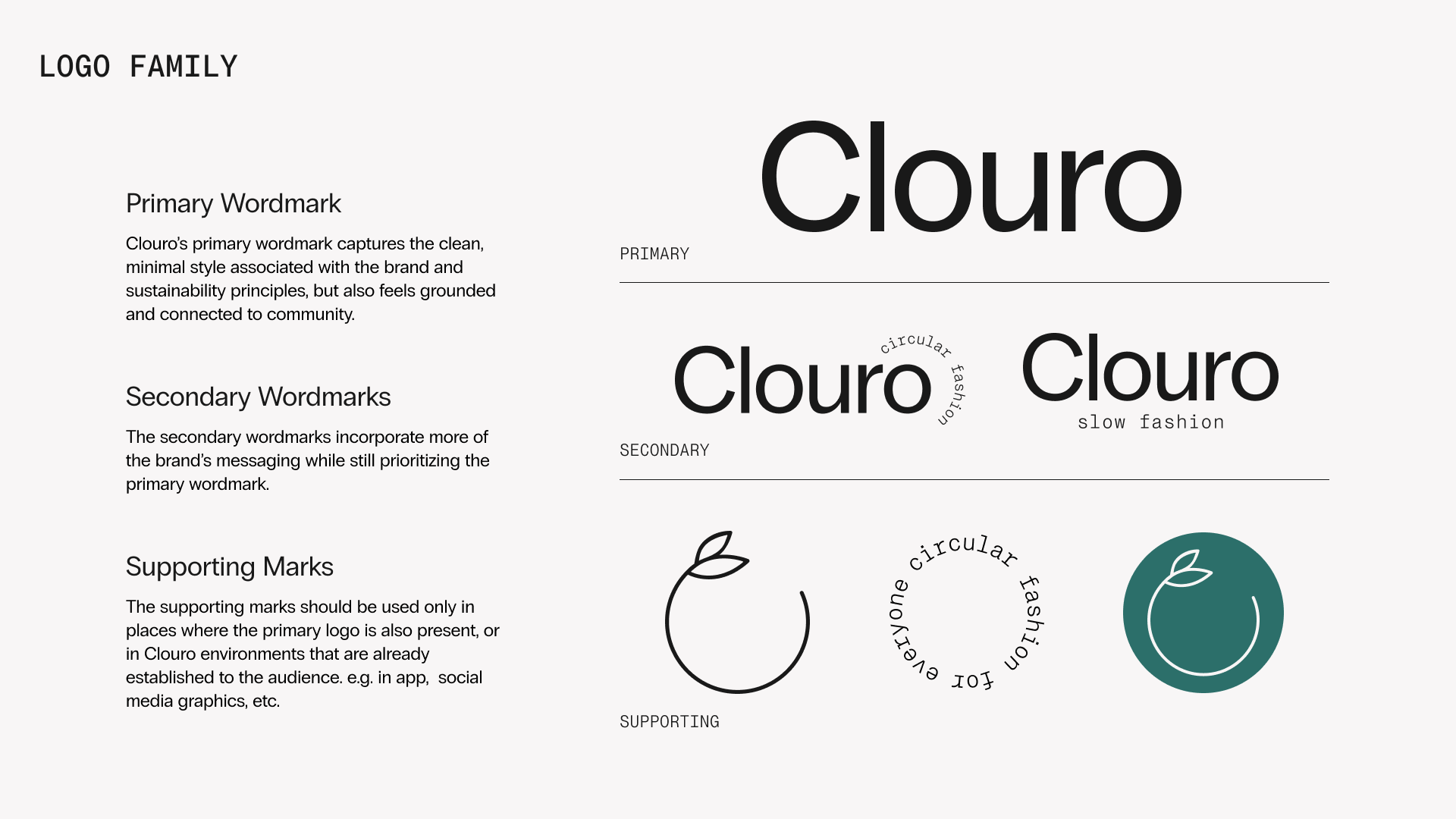
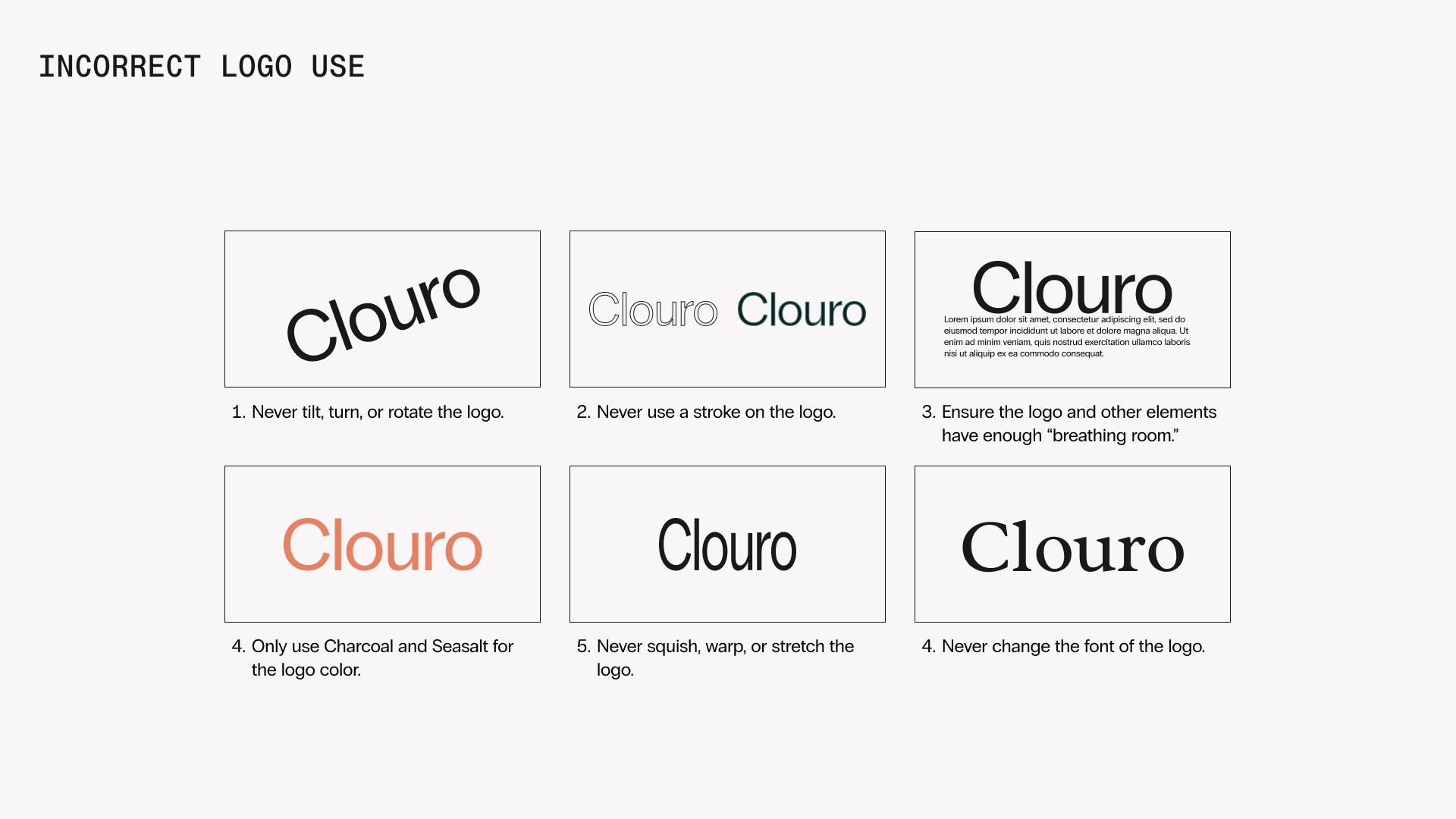
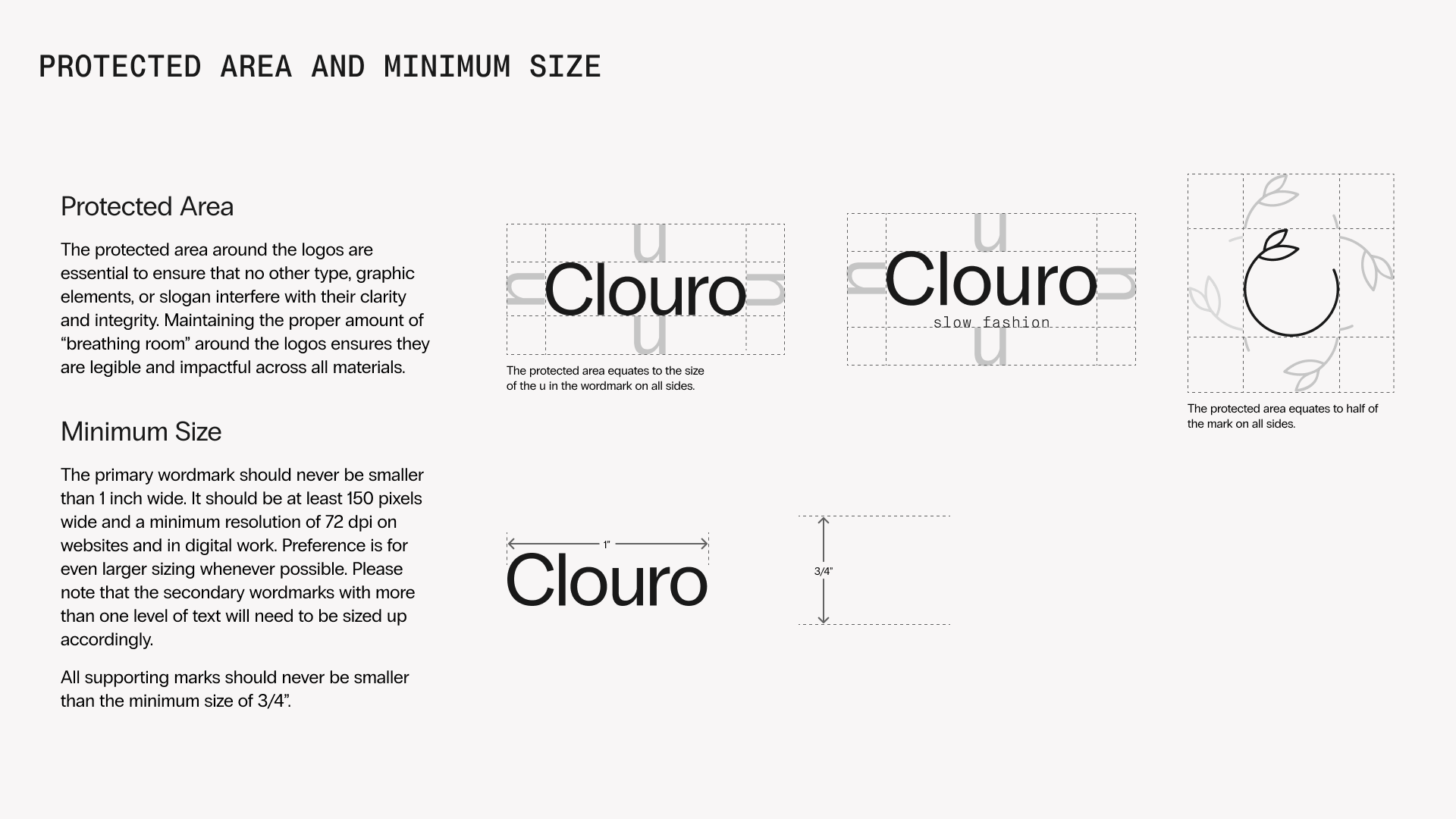
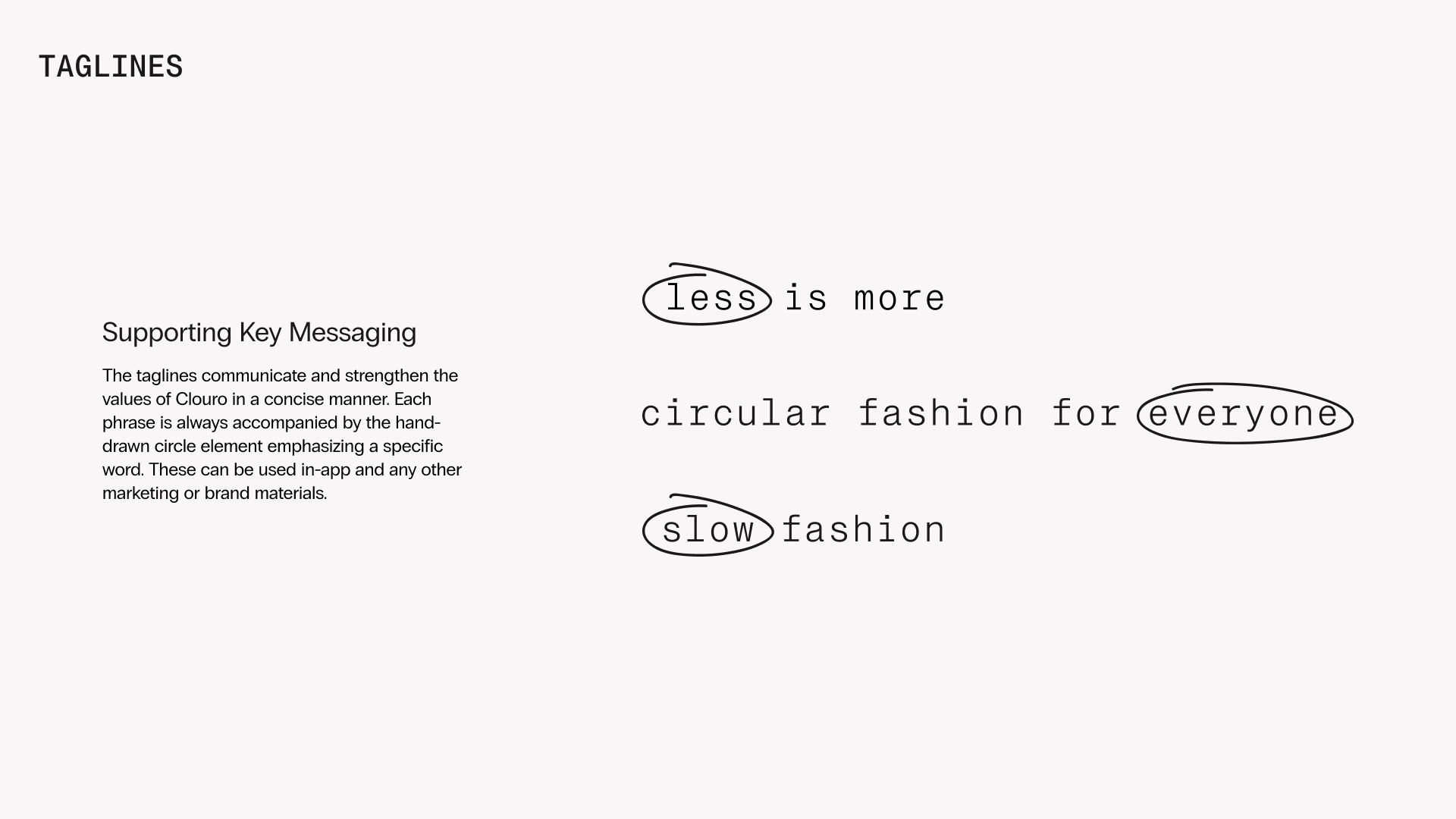
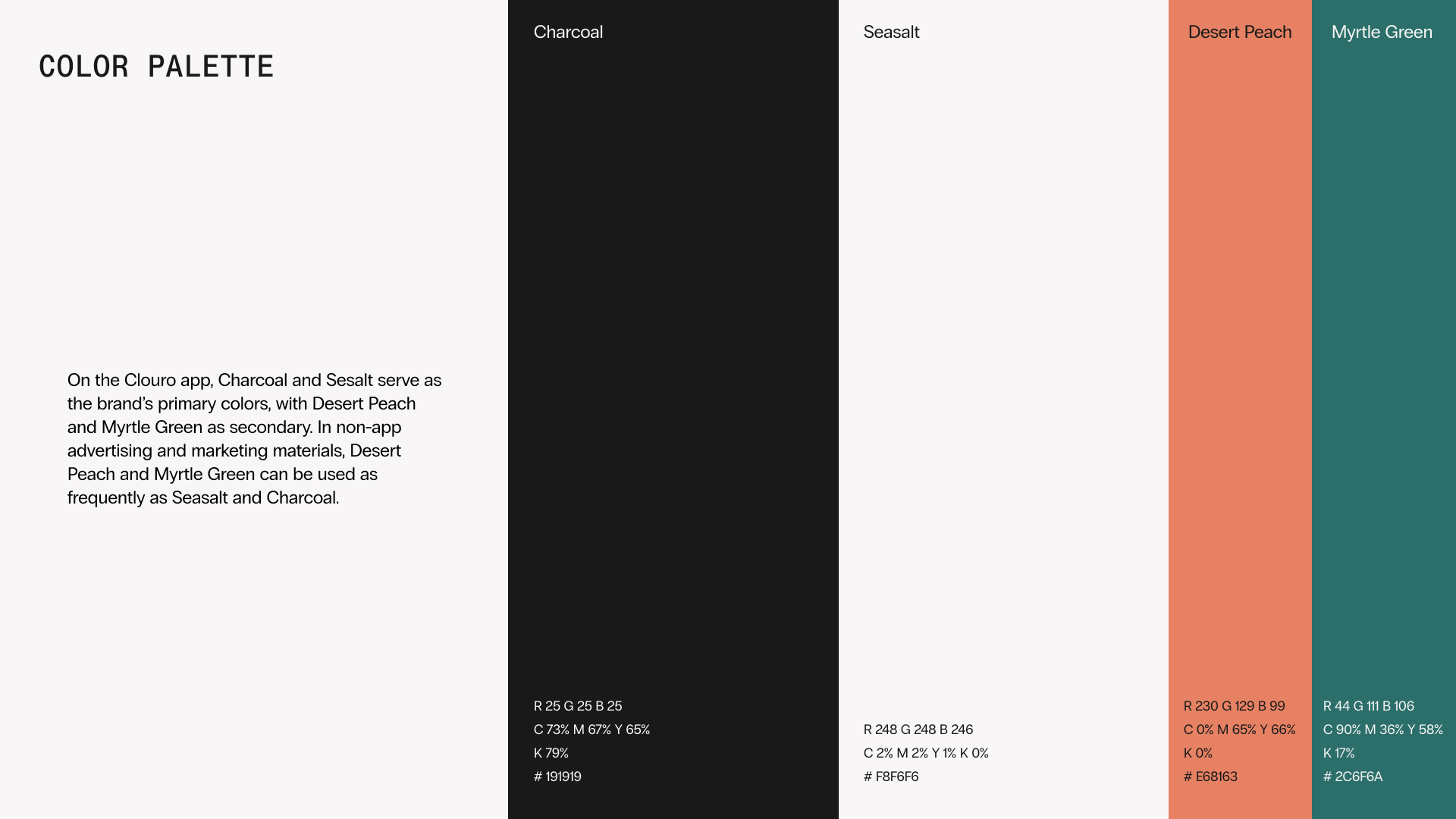

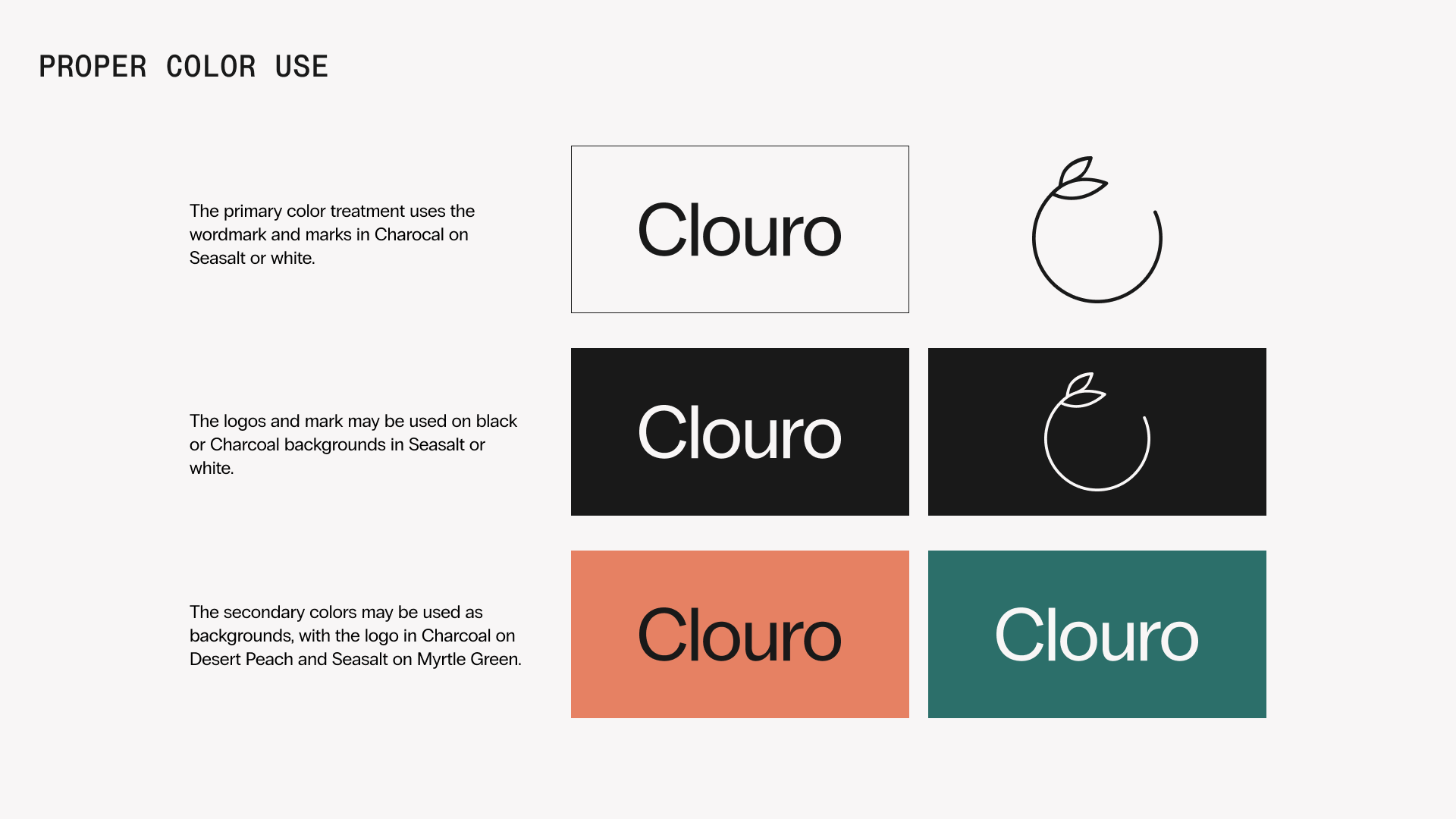
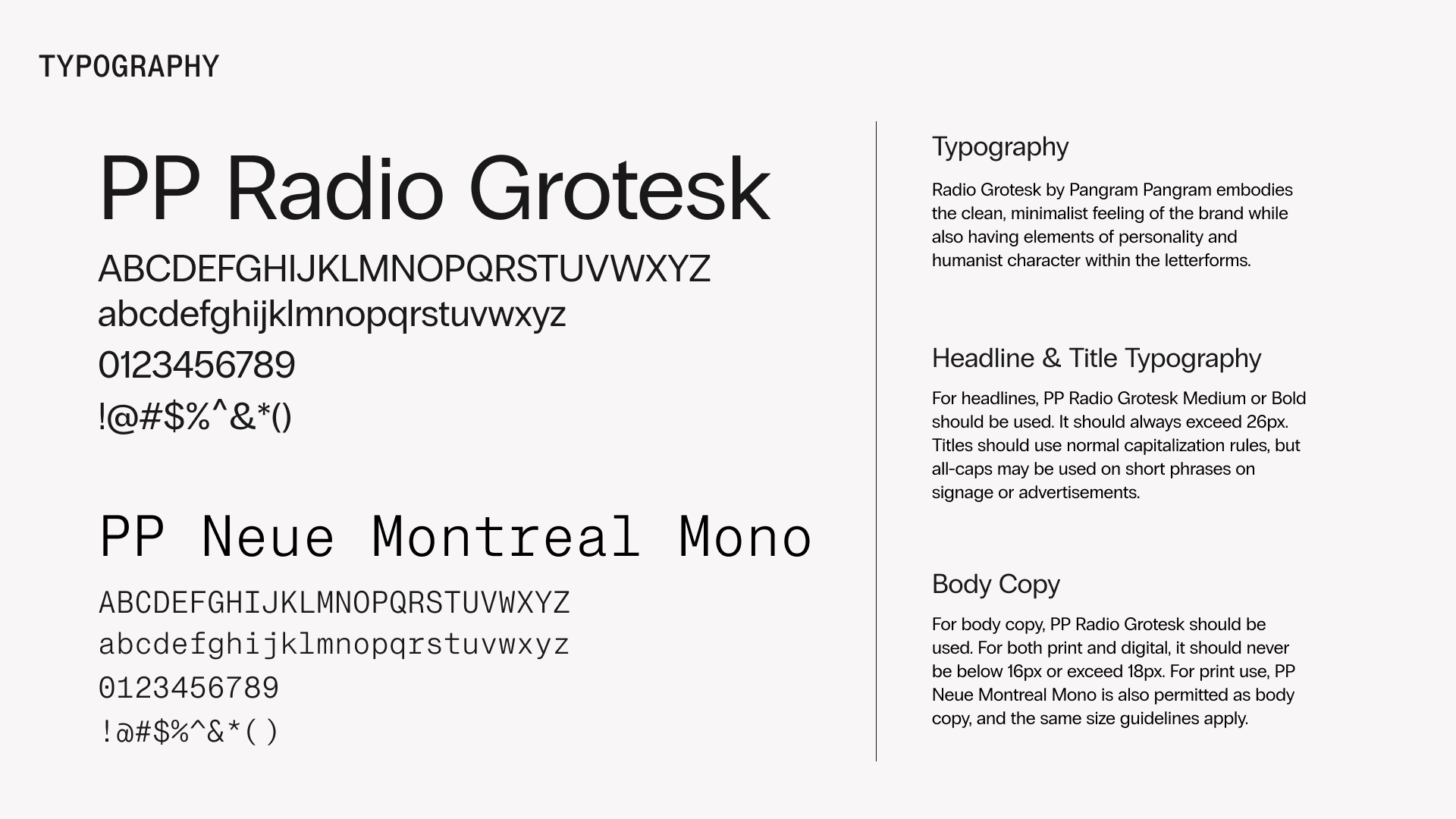
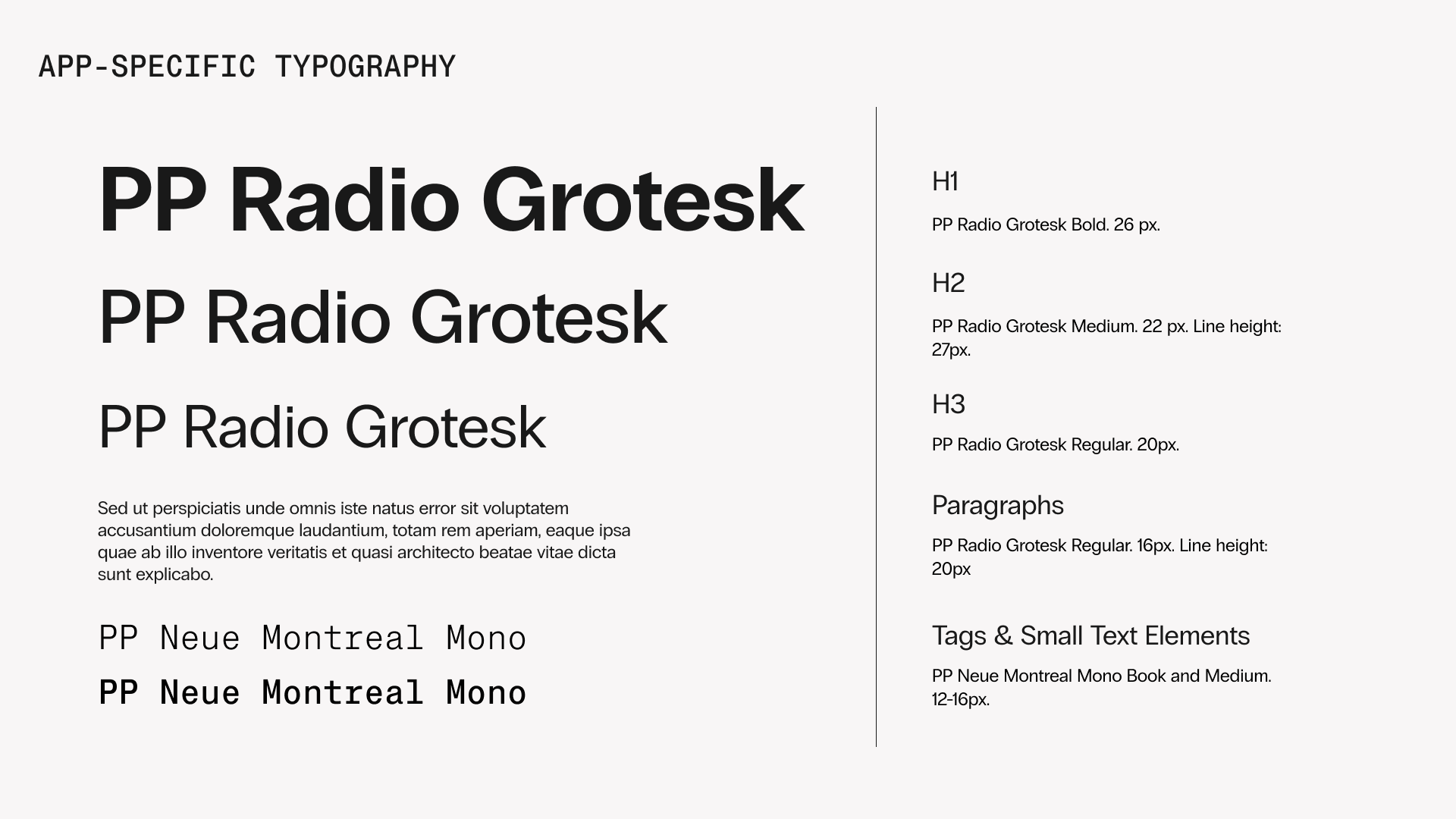
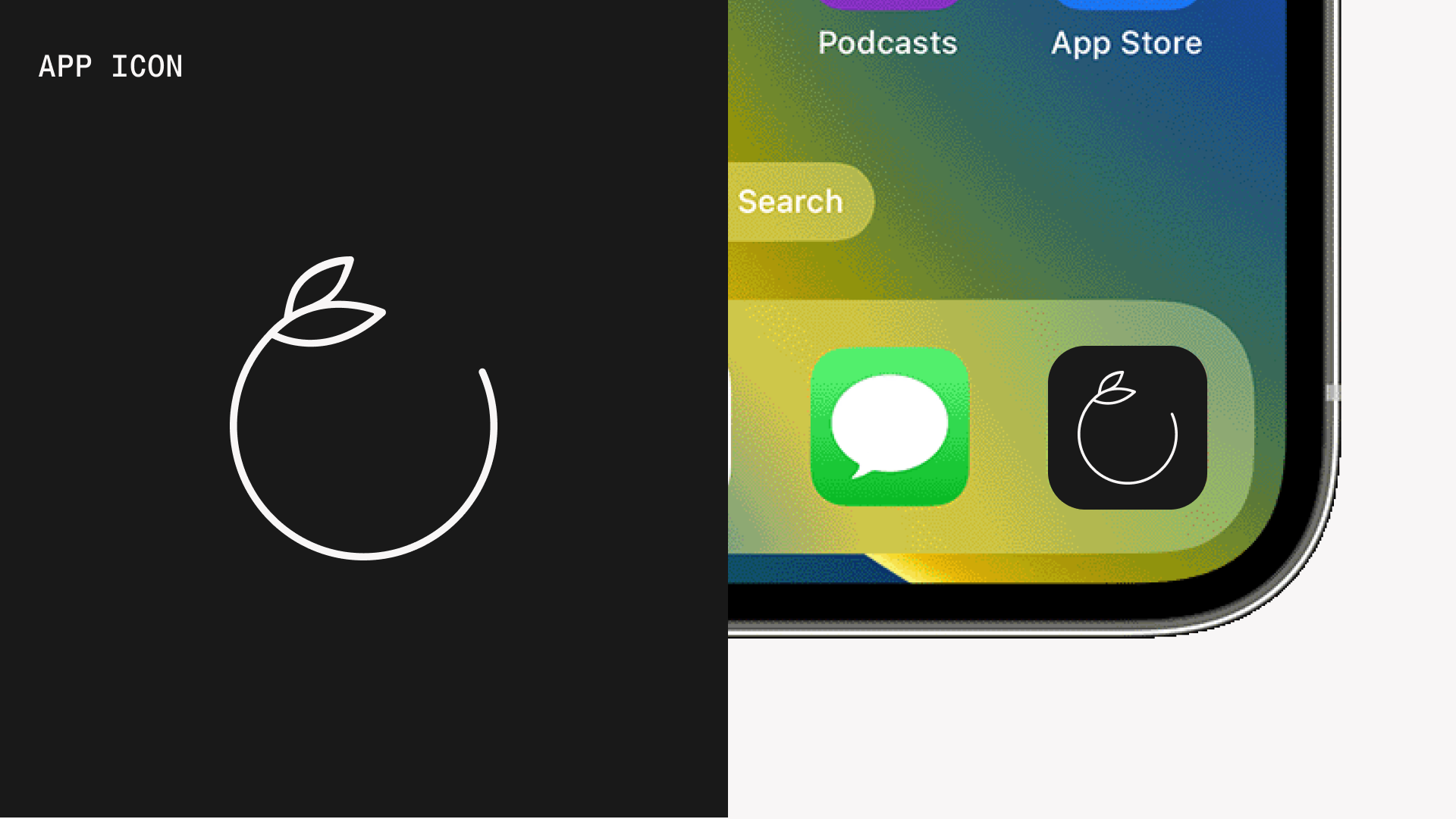
Competitor Analysis
In my competitor analysis, I analyzed 3 direct and 3 indirect competitors. I primarily focused the features of each app/website had and their brand elements such as taglines and look and feel. These are the direct competitors:
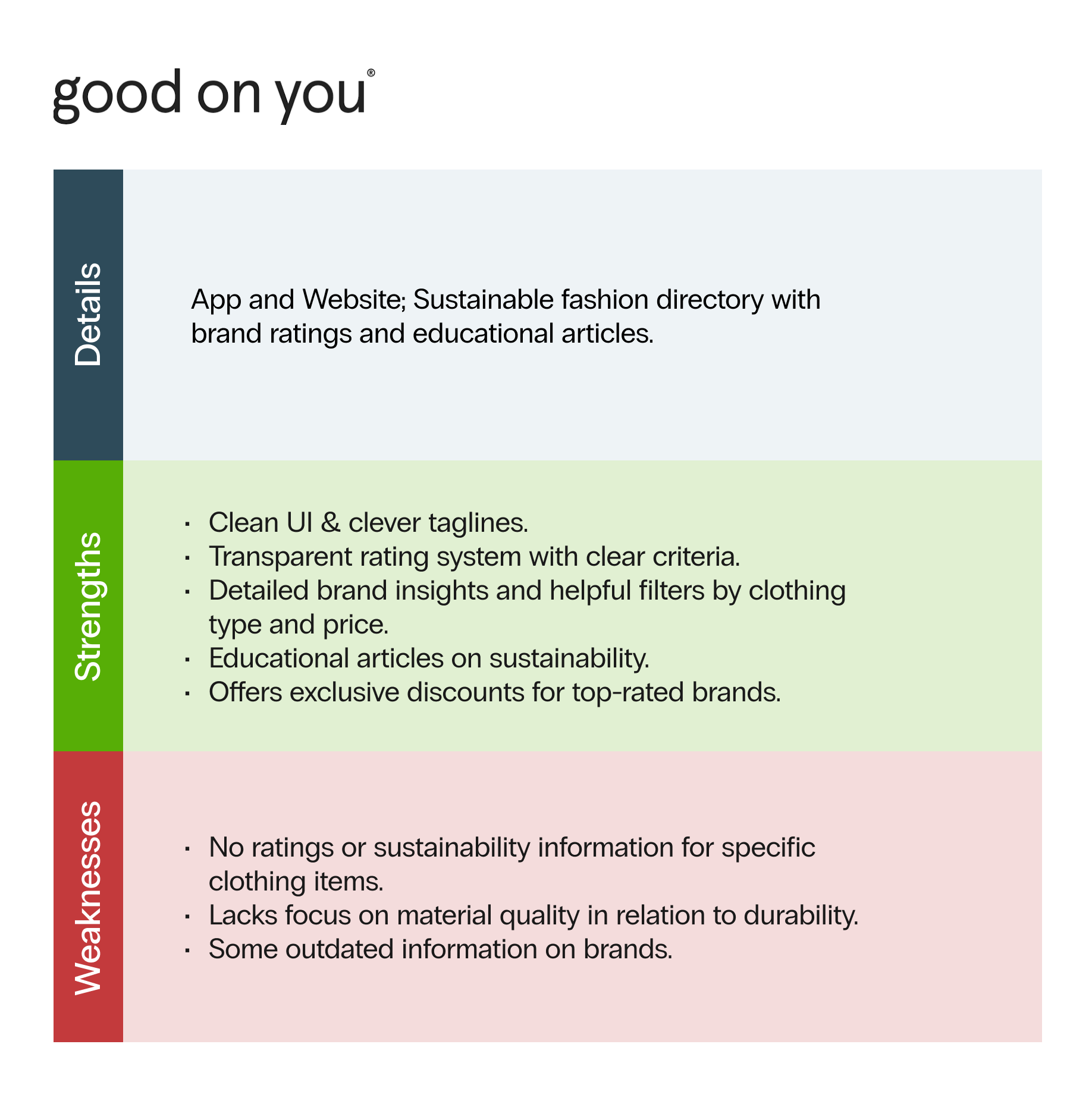
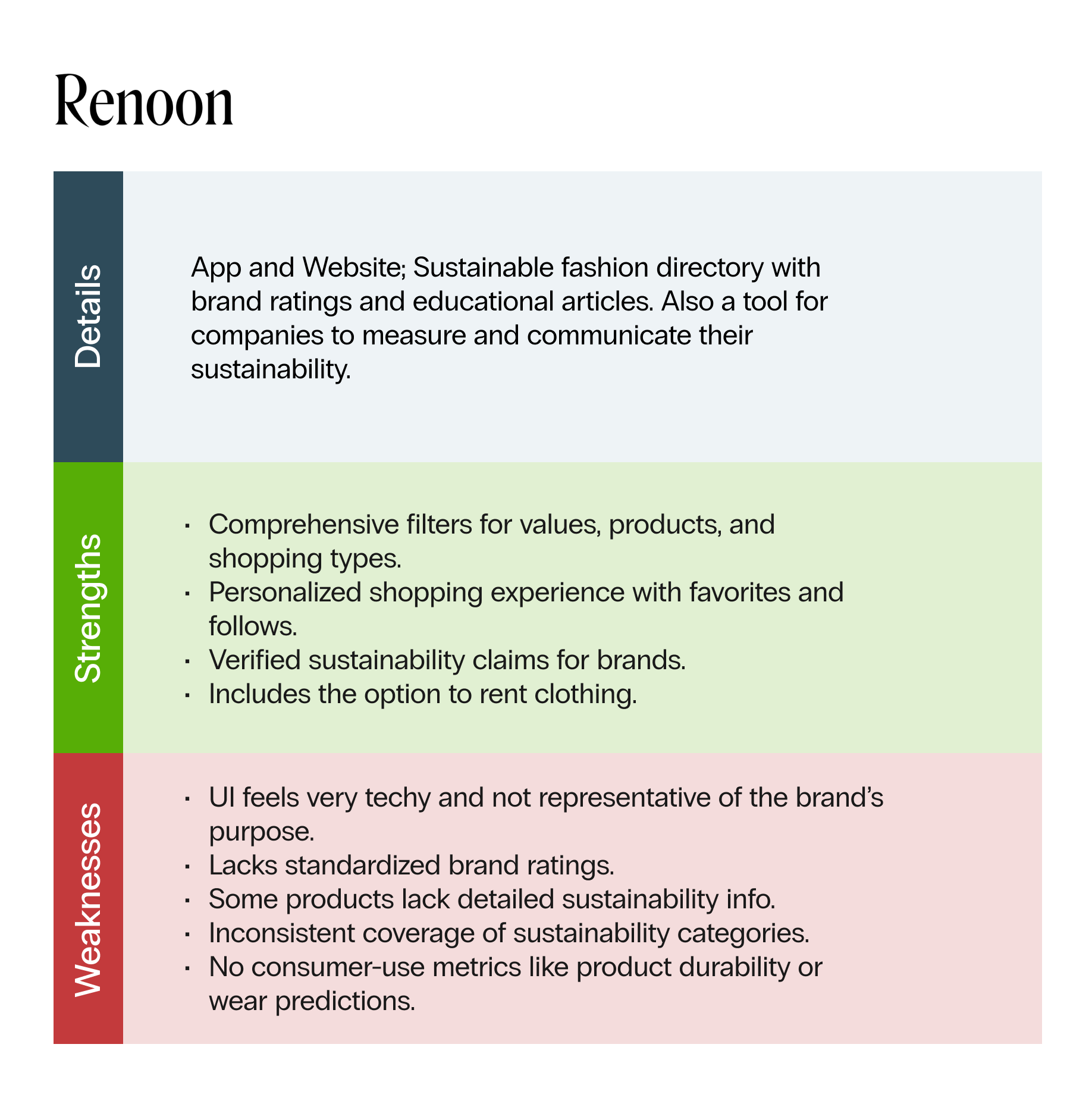
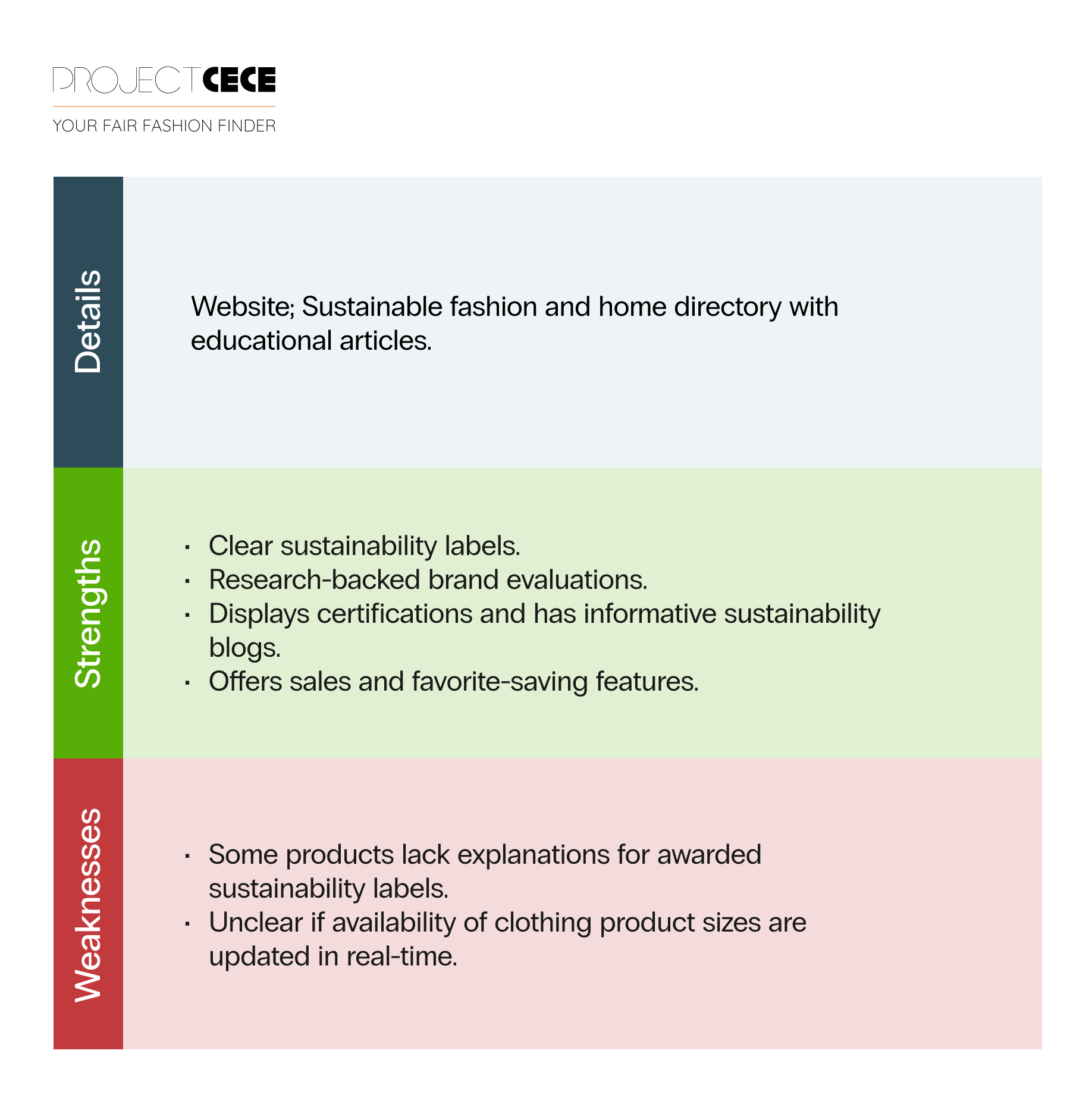
User Interviews
To begin the research process, my classmate Kara Rondinelli and I created a strategic plan with specific objectives to gather data that would help us understand our users effectively. Our first research method involved conducting user interviews, during which we created 39 open-ended questions to ask participants about their knowledge of sustainable fashion, current clothing consumption habits, perceptions of brand transparency, trust in clothing brands, awareness of clothing quality, and preferences for educational content and sustainability support.
Both Kara and I conducted 4 interviews.
User Survey
After the user interviews, Kara and I created an online survey to continue empathizing with and building our understanding of our users. This survey included 27 multiple-choice questions and was shared with our friends and family, coworkers, and published twice in the UConn Student Daily Digest email newsletter, which is received by all undergraduate students. In less than a week, we collected 158 responses. Based on this survey data and the user interview responses, we identified 8 key insights 5 primary pain points.
Key Insights
- Most people want to shop more sustainably but aren’t exactly sure what it entails to do so.
- Money and lack of knowledge are the biggest barriers in making more sustainable fashion choices and purchasing high-quality garments.
- Price and quality are the most important factors that influence consumer purchasing decisions, while sustainability is a lower priority.
- People don’t trust and struggle to verify clothing brands’ transparency and sustainability claims.
- People prefer to engage with educational content through social media (i.e. short/long-form videos and infographics) and articles.
- People want to or already engage in practices to extend the life of their clothes, such as sewing and mending.
- Most people would pay more for high quality or sustainable clothing depending on the price difference.
- People have limited knowledge of materials and attempt to verify clothing quality by physical attributes but are unable to distinguish between high-quality and/or sustainable materials versus those that are not.
Pain Points
Cost Concerns
High prices are a significant barrier to purchasing high-quality and sustainable clothing. Many consumers feel that sustainable options are too expensive.
Prioritization of Other Factors
Price and quality are often a higher priority than sustainability, making it difficult for consumers to shift their purchasing habits.
Lack of Knowledge
Many users are unsure about what constitutes sustainability, how to verify brand claims, which brands are genuinely sustainable or not, and which materials are high-quality or sustainable. This uncertainty makes it challenging to make informed choices.
Insufficient Educational Resources
Users prefer engaging educational content, but there’s a lack of accessible information that explains sustainability in a clear, concise, and compelling manner.
Time and Skill Constraints
Many consumers lack the time to educate themselves about sustainable practices or to shop sustainably in general. Additionally, some feel they do not have the skills needed or time to learn about garment maintenance and repair, which can discourage sustainable clothing practices.
Empathy Maps
As I began to dive deeper into the information we collected, I created three empathy maps based on the user interviews I conducted. Each of these maps represents the unique experience of each user and outlines their behaviors, motivations, and challenges.
User Personas
Based on the user interviews, empathy maps, and user survey, I developed three distinct user personas to better understand the goals, needs, and experiences of the users I'm trying to target. These personas informed all of the design decisions I made throughout this project.
User Journey Maps
I created journey maps for each of the three distinct user personas to visualize their current experiences with sustainable fashion. These outline the goals, thoughts, actions, and pain points of the personas through stages of awareness, searching for sustainable clothing, making a purchase, and upon receiving the sustainable item. This helped me recognize areas for improvement and develop possible solutions within each stage of their journeys.
Think of this file as a bunch of sticky notes on a wall- very large! For the best viewing experience, zoom into the journey maps to read the content! :)
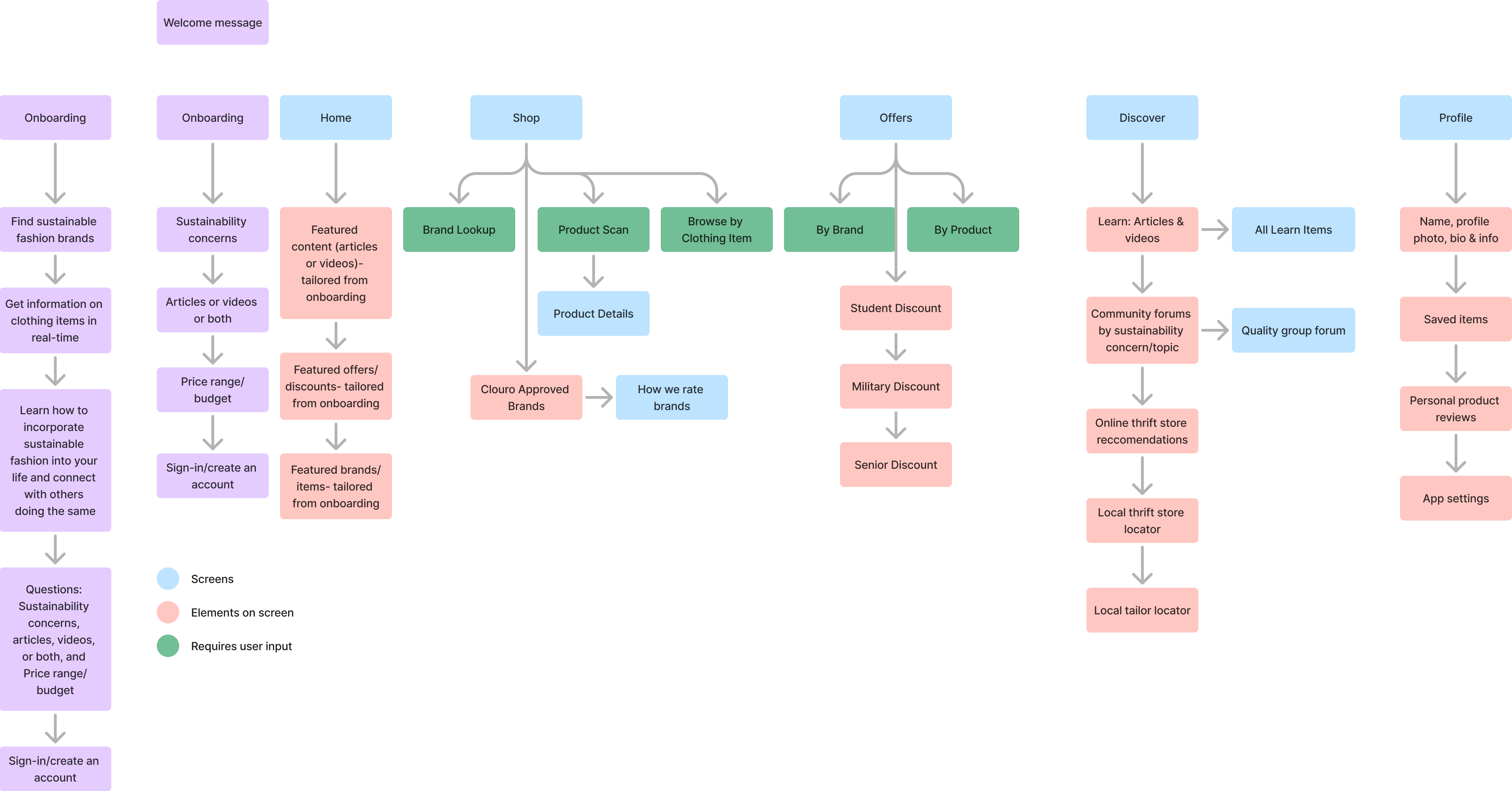
User Testing Round 1: Low-Fidelity
For the first round of user testing, I observed 3 users complete 3 tasks, which included:
- Locate the "Juniper T-Shirt"
- Locate an article about fashion and the environment.
- Locate information about the brand "Mighty Good Basics"
Original Prototype Flow
The first task was most challenging for users, but the subsequent tasks—locating articles and brand information—were completed seamlessly. Key moments of frustration and confusion include:
- All three users got stuck on the "Browse by Clothing Item" filter page and didn't expect to have to click another button ("View Items") after pressing "Tops" to be taken to the products.
- Users expected to find a brand listed under "Clouro Approved Brands" on the shop page and to navigate to products from there.
- Two users thought the tags on the brand cards (e.g., "women's wear," "organic cotton") were clickable.
Changes Based on Insights
To improve usability and resolve the navigation issues I observed, I made many changes to the shop and home pages, which include:
- Converted the "Shop by Clothing Item" button into a toggle with headers "By Brand" and "By Item" to clearly separate the two categories and indicate the user’s location on the page.
- Created a dedicated "By Item" page within the "Shop" section instead of using the previous pop-up filter.
- Made the toggle and its type bolder to catch users’ attention at the top of the page and prevent unnecessary scrolling through brands to find products.
- Replaced tags on brand cards with small text to eliminate the possibility of them being mistaken for buttons.
